Archived Blog Posts
Embrace the Spring Cleaning Season in Sandy, UT: A Fresh Start for Your Home
4/8/2024 (Permalink)
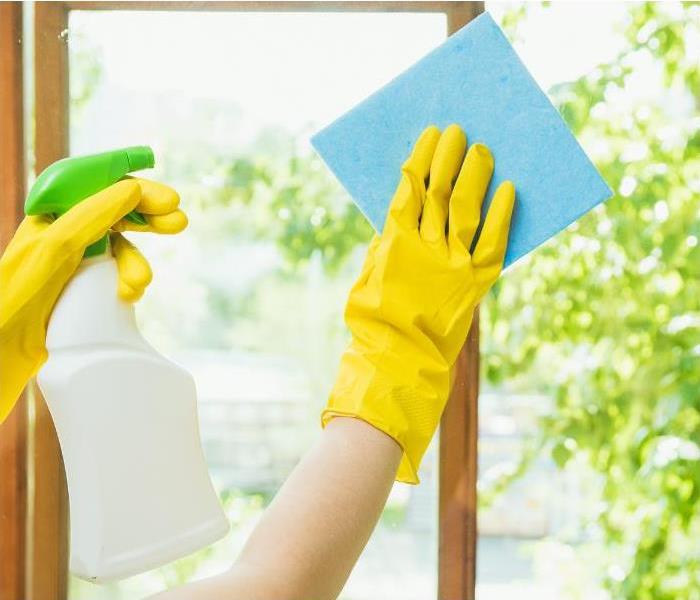 Spring cleaning in Sandy, UT.
Spring cleaning in Sandy, UT.
As the winter chill begins to thaw and the first signs of spring emerge, it's time to roll up your sleeves and embrace the age-old tradition of spring cleaning. Sandy, Utah, with its picturesque landscapes and vibrant community spirit, offers the perfect backdrop for this annual ritual of renewal. From decluttering your living spaces to refreshing your outdoor areas, here's how you can embark on a transformative spring cleaning journey in Sandy, UT.
1. Purge and Declutter
Spring cleaning begins with decluttering your home, and there's no better time to part ways with items you no longer need or use. Start with one room at a time, sorting through closets, cabinets, and drawers. Embrace the KonMari method by asking yourself if each item sparks joy. Donate gently used clothing, toys, and household goods to local charities or organize a yard sale to give your belongings a new lease on life.
2. Deep Clean Your Living Spaces
Once the clutter is out of the way, it's time to deep clean your living spaces. From dusting ceiling fans and baseboards to scrubbing floors and carpets, leave no corner untouched. Sandy, UT, is known for its stunning views of the Wasatch Mountains, so don't forget to clean your windows to let in as much natural light as possible. Consider using eco-friendly cleaning products to minimize your environmental impact while achieving a sparkling clean home.
3. Refresh Your Outdoor Areas
As the snow melts away and temperatures rise, take advantage of Sandy's beautiful outdoor spaces to spruce up your yard and garden. Clear debris, trim overgrown shrubs, and tidy up flower beds to create a welcoming outdoor oasis. Consider adding colorful flowers or planting a vegetable garden to add a touch of beauty and sustainability to your home. Don't forget to power wash your outdoor surfaces, such as patios and decks, to remove winter grime and prepare them for summer entertaining.
4. Organize and Streamline
Spring cleaning isn't just about cleaning—it's also about organizing and streamlining your belongings for maximum efficiency. Invest in storage solutions such as bins, baskets, and shelving units to keep clutter at bay and maintain a tidy home. Labeling storage containers can make it easier to find items when you need them, saving you time and frustration in the long run. Create designated spaces for frequently used items to prevent them from piling up on countertops or getting lost in drawers.
5. Tackle Maintenance Tasks
While spring cleaning is primarily focused on deep cleaning and organizing, it's also an opportunity to tackle essential maintenance tasks around your home. Check your HVAC system, replace air filters, and schedule a professional tune-up to ensure optimal performance during the warmer months. Inspect your plumbing for leaks, clean gutters and downspouts, and inspect your roof for any signs of damage. Addressing these tasks now can help prevent costly repairs down the road and keep your home in top condition.
6. Embrace Sustainable Practices
As you embark on your spring cleaning journey in Sandy, UT, consider incorporating sustainable practices into your routine. Use reusable cleaning cloths instead of disposable paper towels, switch to energy-efficient light bulbs, and recycle or repurpose items whenever possible. Composting organic waste can help reduce landfill waste while enriching your garden soil naturally. By adopting eco-friendly habits, you can minimize your carbon footprint and contribute to a cleaner, healthier planet for future generations.
7. Reward Yourself
Completing a thorough spring cleaning can be a rewarding experience, so don't forget to treat yourself for a job well done. Whether it's enjoying a leisurely hike in the nearby Wasatch Mountains, treating yourself to a delicious meal at a local restaurant, or simply relaxing with a good book in your freshly cleaned home, take time to savor the fruits of your labor. Spring cleaning is not just about achieving a clean and organized home—it's also about embracing a fresh start and welcoming the new season with open arms.
In conclusion, spring cleaning in Sandy, UT, is an opportunity to refresh your home, rejuvenate your spirit, and embrace the beauty of the season. By decluttering, deep cleaning, and organizing your living spaces, you can create a clean and inviting environment for yourself and your loved ones to enjoy. So, roll up your sleeves, grab your cleaning supplies, and embark on a transformative spring cleaning journey in Sandy, UT. Your home—and your soul—will thank you for it.
4 Facts About Black Mold in Sandy, UT
3/9/2024 (Permalink)
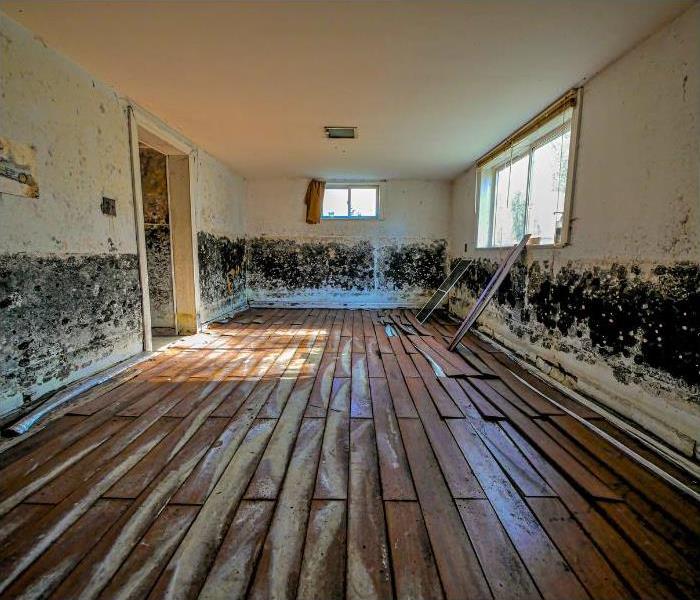 Black mold in Sandy, UT
Black mold in Sandy, UT
Nestled at the foothills of the stunning Wasatch Range, Sandy, Utah, boasts a picturesque landscape and a vibrant community. However, like any city, Sandy is not immune to the challenges posed by environmental factors, and one such concern is the presence of black mold. Black mold, scientifically known as Stachybotrys chartarum, is a type of toxic mold that can pose serious health risks to residents. In this blog post, we will explore four essential facts about black mold in Sandy, UT, shedding light on the potential dangers and the importance of addressing this issue promptly.
1. Ideal Conditions for Black Mold Growth
Understanding the conditions that foster black mold growth is crucial for residents in Sandy, UT, to take proactive measures. Black mold thrives in environments with high humidity and moisture levels. Sandy, with its semi-arid climate, may not seem like an ideal breeding ground for mold at first glance. However, specific indoor spaces, such as basements, bathrooms, and poorly ventilated areas, can create the perfect conditions for mold growth.
Sandy residents should be particularly vigilant during the winter months when temperature fluctuations, coupled with inadequate insulation and ventilation, can lead to condensation issues. Water damage from leaks, floods, or plumbing problems can also contribute to the growth of black mold. Regular inspections and maintenance of homes and buildings can help prevent the conditions that encourage mold development.
2. Identification and Prevention Strategies
Recognizing the signs of black mold infestation is crucial for prompt intervention. Mold often appears as dark, slimy patches on walls, ceilings, or other surfaces. A musty odor is another indicator of mold growth, and residents in Sandy should be attentive to any unusual smells in their homes. Discoloration, water stains, or peeling paint may also suggest a moisture problem that could lead to mold development.
Preventing black mold in Sandy, UT, involves implementing practical strategies to control moisture levels. Proper ventilation, dehumidifiers, and routine inspections can help maintain optimal indoor conditions. Additionally, addressing water leaks or flooding promptly is essential to prevent the growth of mold. Homeowners should also consider using mold-resistant materials in construction and keeping living spaces well-maintained to discourage mold colonization.
3. Professional Mold Remediation Services
While proactive prevention is crucial, situations may arise where black mold has already infiltrated a home or building. In such cases, it is imperative to seek professional mold remediation services to effectively address the issue. Attempting to handle mold removal without the necessary expertise and equipment can exacerbate the problem and pose health risks.
Sandy residents should engage certified mold remediation professionals who follow industry best practices and safety protocols. These experts can conduct thorough inspections, assess the extent of the mold infestation, and develop a comprehensive remediation plan. Specialized equipment, such as HEPA filters and containment barriers, is used to ensure the safe removal of mold without spreading spores to unaffected areas.
In conclusion, understanding the facts about black mold in Sandy, UT, is essential for residents to protect their homes and health. By being aware of the ideal conditions for mold growth, recognizing health implications, implementing prevention strategies, and seeking professional remediation when necessary, Sandy residents can create a safer and healthier living environment. Regular maintenance, prompt attention to water issues, and a proactive approach to mold prevention will contribute to a community that thrives in the face of potential challenges posed by black mold.
Swift Solutions to Water Damage: SERVPRO of Sandy to the Rescue
1/13/2024 (Permalink)
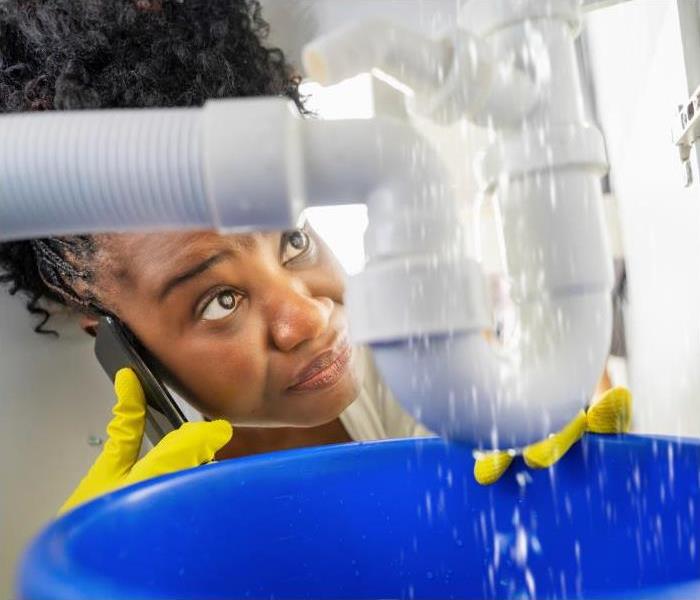 Leaking pipe in Sandy, Salt Lake City, Utah.
Leaking pipe in Sandy, Salt Lake City, Utah.
Water damage can strike at any moment, catching homeowners off guard and wreaking havoc on their property. One of the most common causes of water damage is a leaking pipe. Whether it's a slow and persistent drip or a sudden burst, the consequences can be devastating. However, acting swiftly is crucial to mitigating the damage and preventing long-term issues. In such situations, SERVPRO of Sandy emerges as a beacon of hope, providing immediate and effective solutions to address water damage caused by leaking pipes.
1. Understanding the Scope of Water Damage:
Before delving into the role of SERVPRO of Sandy, it's essential to comprehend the potential consequences of water damage stemming from a leaking pipe. Aside from obvious property damage, water intrusion can lead to mold growth, compromised structural integrity, and health hazards. It's a race against time to mitigate these risks, emphasizing the need for prompt action.
2. Immediate Response: The SERVPRO Advantage
SERVPRO of Sandy specializes in professional water damage restoration, offering a swift and comprehensive response to mitigate the effects of water damage. Their team of highly trained technicians understands the urgency of the situation and is equipped with the latest tools and technology to address the issue promptly.
3. Emergency Water Extraction:
The first step in the mitigation process is the extraction of standing water. SERVPRO of Sandy employs advanced water extraction equipment to swiftly remove water from the affected areas. This not only prevents further damage but also expedites the drying process.
4. Thorough Drying:
Once standing water is removed, the focus shifts to thorough drying of the affected spaces. SERVPRO utilizes industrial-strength dehumidifiers and high-powered air movers to eliminate moisture from walls, floors, and other surfaces. This prevents the onset of mold and mildew, safeguarding the indoor air quality.
5. Professional Assessment:
A crucial aspect of SERVPRO's service is a professional assessment of the extent of water damage. This assessment guides the restoration process, ensuring that no hidden pockets of moisture are left untreated. Their experts use moisture meters and thermal imaging technology to identify areas that may require special attention.
6. Mold Remediation:
Given enough time and moisture, mold can quickly become a secondary concern. SERVPRO of Sandy is well-versed in mold remediation techniques, addressing any mold growth resulting from the water damage. Timely intervention in this regard can prevent more significant issues down the line.
7. Structural Restoration:
In cases of severe water damage, structural components of a property may be compromised. SERVPRO of Sandy has the expertise and resources to handle structural restoration, ensuring that the property is returned to its pre-damage condition.
8. Content Restoration:
Water damage doesn't only affect the structure but also the contents within. SERVPRO employs specialized techniques for content restoration, salvaging belongings that may have otherwise been deemed unsalvageable.
9. Customer-Centric Approach:
SERVPRO of Sandy takes a customer-centric approach to water damage restoration. They understand the stress and disruption such events can cause, and their team is committed to providing compassionate and efficient service. Their communication is transparent, keeping homeowners informed at every step of the restoration process.
10. 24/7 Availability:
Water damage doesn't adhere to a schedule, and neither does SERVPRO of Sandy. Their emergency response team is available 24/7, ready to spring into action whenever disaster strikes. This prompt response can make all the difference in minimizing damage.
11. Insurance Coordination:
Navigating insurance claims can be a daunting task, especially in the aftermath of a crisis. SERVPRO of Sandy assists homeowners in the claims process, working with insurance companies to ensure a smooth and efficient resolution.
12. Preventive Guidance:
Beyond the immediate restoration, SERVPRO of Sandy offers preventive guidance to homeowners. This includes recommendations on how to safeguard against future water damage, whether through routine maintenance or the installation of protective measures.
Dealing with water damage resulting from a leaking pipe requires immediate and professional intervention. SERVPRO of Sandy stands out as a reliable partner in these challenging times, offering a swift and comprehensive response to mitigate the effects of water damage. Their expert team, advanced technology, and customer-centric approach make them a beacon of hope for homeowners facing the unexpected aftermath of a leaking pipe. When water damage strikes, SERVPRO of Sandy is the trusted ally to restore homes and peace of mind.
A Guide to Dealing with Frozen Pipes in Sandy, UT
12/27/2023 (Permalink)
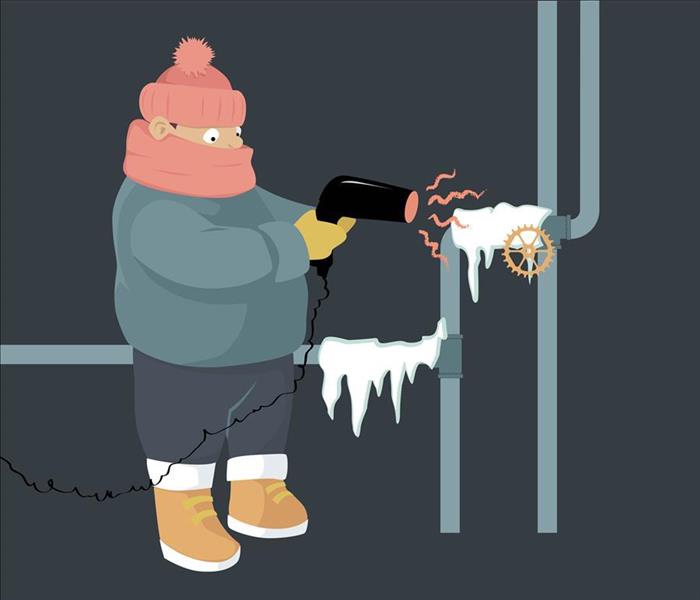 Frozen pipes in Sandy, UT.
Frozen pipes in Sandy, UT.
Sandy, UT, with its breathtaking landscapes and serene winters, is a haven for those who appreciate the beauty of the season. However, as temperatures drop, residents are faced with the challenge of protecting their homes from the harsh effects of winter, including the dreaded issue of frozen pipes. In this comprehensive blog post, we will delve deeper into the nuances of dealing with frozen pipes in Sandy and explore a range of preventative measures and practical tips to help you navigate this winter woe effectively.
Understanding the Enemy:
Before we dive into the solutions, it's crucial to understand why pipes freeze and the potential consequences. When temperatures plummet, water inside pipes can freeze, causing them to expand. This expansion can lead to a build-up of pressure within the pipes, risking cracks or even bursts. The consequences are not only inconvenient but can result in costly repairs and water damage to your property.
Preventative Measures:
Insulation is Your Ally: The first line of defense against frozen pipes is proper insulation. Identify exposed pipes in your home, particularly those in unheated or exterior areas, and insulate them using pipe sleeves or heat tape. By adding an extra layer of protection, you create a barrier that helps retain the heat within the pipes, preventing them from freezing.
Seal the Gaps: Cold drafts can find their way into your home through gaps around doors and windows. Inspect these areas and seal any openings to prevent the intrusion of frigid air. Weatherstripping and caulking are effective tools in fortifying your home against the winter chill.
Keep the Heat On: It may be tempting to turn down the thermostat to save on energy costs, especially when you're away. However, maintaining a consistent indoor temperature is crucial in preventing frozen pipes. Set your thermostat to a level that keeps your home comfortably warm, even when you're not there. This steady warmth provides a vital layer of protection for your plumbing.
Let the Faucets Drip: On exceptionally cold nights, allowing faucets connected to vulnerable pipes to drip slowly can be a game-changer. The movement of water, even at a minimal flow, helps prevent it from stagnating and freezing within the pipes. This simple yet effective technique is particularly useful during extreme cold spells.
Cabinet Doors Open: In areas where plumbing is located inside cabinets, such as under sinks, consider opening the cabinet doors during cold weather. This allows warm air to circulate around the pipes, reducing the chances of them freezing. It's a small adjustment that can make a significant difference in maintaining the warmth needed to prevent freezing.
Thawing Frozen Pipes:
Despite your best efforts, frozen pipes may still occur. When faced with this situation, it's essential to know how to thaw them safely to avoid causing further damage.
Locate the Frozen Section: If you suspect a pipe is frozen, the first step is to identify the affected area. This may involve checking exposed pipes in unheated areas, such as basements, crawl spaces, or attics.
Apply Gentle Heat: Once the frozen section is identified, the next step is to apply gentle heat. This can be achieved using a hairdryer, heat lamp, or towels soaked in hot water. It's crucial to start at the end closest to the faucet to allow water to flow out as the ice melts.
Avoid Open Flames: While heat is essential for thawing pipes, it's crucial to avoid using open flames or high-intensity heat sources. These can damage the pipes and pose a significant safety risk. Stick to safer alternatives such as electric heating tools designed for this purpose.
Patience is Key: Thawing frozen pipes requires patience. Rushing the process can lead to complications. Allow the heat to work gradually, and monitor the thawing progress to ensure a steady and controlled resolution.
When to Seek Professional Assistance:
While many instances of frozen pipes can be handled with the tips mentioned above, there are situations where professional assistance is warranted.
Persistent Issues: If you find yourself dealing with persistent issues of frozen pipes despite taking preventive measures, it's time to consult a licensed plumber. A professional can conduct a thorough assessment of your plumbing system, identify any underlying problems, and implement effective solutions.
Uncertain Situations: If you're unsure about how to handle frozen pipes or suspect more extensive damage, it's best to err on the side of caution and seek professional help. Ignoring potential issues can lead to further damage and increased repair costs.
As winter settles into Sandy, UT, the idyllic landscapes may be accompanied by the challenges of frozen pipes. However, armed with the knowledge of preventative measures, effective thawing techniques, and the wisdom to seek professional help when needed, residents can confidently face the winter season. Remember, the key lies in preparation and a proactive approach. By taking these steps, you not only protect your home from the inconvenience of frozen pipes but also ensure a cozy and worry-free winter. Stay warm, stay informed, and let the beauty of winter in Sandy be a source of joy, not plumbing headaches.
Winterizing Your Home in Sandy, Utah: A Comprehensive Guide to Protecting Your Investment
11/9/2023 (Permalink)
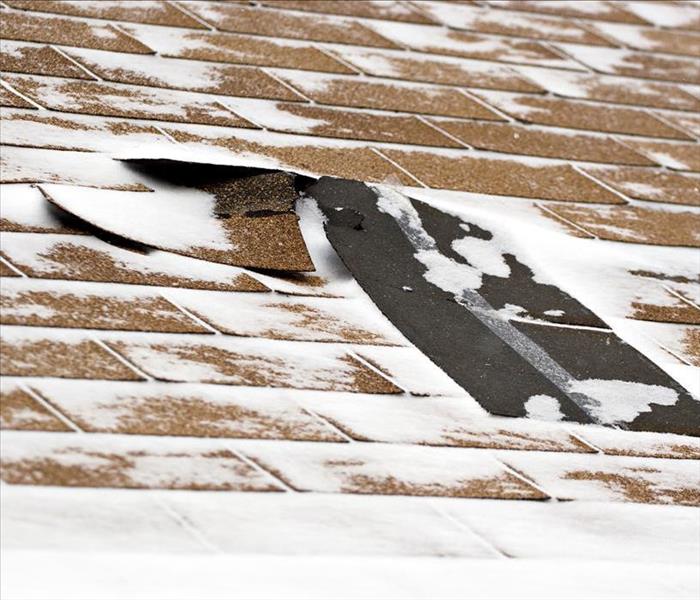 Inspect and repair your roof now to avoid damage during winter season in Sandy, UT.
Inspect and repair your roof now to avoid damage during winter season in Sandy, UT.
Winter in Sandy, Utah, with its picturesque snow-covered landscapes and crisp air, brings a unique charm to the region. However, the beauty of the season also comes with challenges for homeowners, as the cold temperatures and winter storms can pose risks to property and infrastructure. To ensure your home stays warm, cozy, and damage-free throughout the winter season, here's a detailed guide on how to prepare for winter in Sandy, Utah.
10 Steps To Prepare Your Home For Winter
1. Sealing the Envelope: Inspect and Seal Windows and Doors
One of the first steps in winter preparation is to inspect your home's envelope for potential drafts. Cold air seeping in through gaps around windows and doors can significantly impact your home's energy efficiency. Conduct a thorough examination, checking for any cracks, gaps, or leaks. Seal these openings with weatherstripping or caulking to create a tighter seal, preventing cold air from entering and warm air from escaping. This simple yet effective measure not only keeps your home warmer but also helps reduce energy costs during the winter months.
2. Gutter Maintenance: Cleaning and Inspection
Proper gutter maintenance is essential to prevent water-related issues during winter. Clogged gutters can lead to ice dams, causing water to back up and potentially damage your roof and interior. Before winter arrives, clean out any debris from gutters and downspouts. Ensure that water can flow freely to prevent ice buildup. Consider installing gutter guards to minimize debris accumulation, reducing the frequency of cleanings. This proactive approach to gutter maintenance will safeguard your home from the potential hazards of ice dams and water damage.
3. Protecting Your Pipes: Insulation and Prevention
Frozen pipes can result in extensive damage and costly repairs. To prevent this winter nightmare, insulate exposed pipes in areas such as attics, basements, and crawl spaces. Use pipe insulation sleeves or heat tape to provide an extra layer of protection. During extremely cold nights, let faucets drip to keep water flowing, reducing the risk of freezing. Familiarize yourself with the location of your water shut-off valve, as knowing how to quickly turn off the water supply can mitigate potential damage in case of a pipe burst. Taking these measures ensures that your plumbing remains intact and functional throughout the winter.
4. Heating System Maintenance: Schedule a Professional Inspection
A reliable heating system is paramount for a comfortable and safe winter. Schedule a professional inspection of your furnace before the cold sets in. A qualified technician can identify and address any issues, ensuring that your heating system operates efficiently throughout the winter months. Regular maintenance not only enhances performance but also reduces the risk of unexpected breakdowns. Additionally, changing the furnace filter and checking the thermostat settings contribute to a more energy-efficient and cost-effective heating system.
5. Winterizing Outdoor Plumbing: Preventing Frozen Pipes
Outdoor plumbing, such as hoses and water valves, requires special attention before winter arrives. Disconnect and drain outdoor hoses to prevent freezing, as frozen water in hoses can lead to pipe damage. Shut off outdoor water valves and drain any remaining water to eliminate the risk of frozen pipes. By winterizing your outdoor plumbing, you safeguard these vulnerable components from the effects of cold temperatures, reducing the likelihood of burst pipes and water damage.
6. Roof Integrity: Inspect and Repair
Your roof is the first line of defense against winter weather. Inspect it for any damaged or missing shingles, as these vulnerabilities can lead to leaks and water damage. Snow and ice can exacerbate existing issues, making proactive roof maintenance crucial. Address any identified problems promptly to ensure your roof remains in top condition throughout the winter season. Investing time in roof inspection and repair now can save you from more extensive and costly repairs in the future.
7. Stock Up on Winter Supplies: Essentials for Snowy Days
Being prepared for winter storms is essential for maintaining both safety and comfort. Stock up on winter supplies, including rock salt, sand, and snow shovels. These items are crucial for quickly clearing walkways and driveways after snowfall, minimizing the risk of slips and falls. Keep these supplies easily accessible, and consider creating a designated storage area for winter essentials. Proactive preparation ensures that you're ready to tackle winter weather challenges and maintain a safe and navigable outdoor space around your property.
8. Pruning and Trimming: Protecting Against Winter Weight
Heavy snow and ice can weigh down tree branches, posing a risk to your home and property. Prune trees and trim branches, especially those close to your house. This preventive measure reduces the likelihood of branches breaking under the weight of winter precipitation. By addressing potential hazards before winter storms hit, you minimize the risk of damage to your roof, windows, and other structures. Regular tree maintenance not only protects your property but also contributes to the overall safety and aesthetics of your outdoor space.
9. Create an Emergency Kit: Preparedness for Unexpected Events
Winter weather can bring unexpected challenges, from power outages to impassable roads. Prepare for such scenarios by assembling an emergency kit. Include items such as flashlights, batteries, blankets, non-perishable food, and a first aid kit. Having these essentials on hand ensures that you're ready to face unexpected situations with confidence. Regularly check and update your emergency kit to ensure that all items are in good condition and within their expiration dates. Being well-prepared allows you to navigate winter storms with resilience and ensures the safety and well-being of your household.
10. Stay Informed: Weather Awareness for Proactive Planning
Knowledge is a powerful tool in winter preparedness. Stay informed about local weather forecasts, advisories, and warnings. Regularly check reliable weather sources to stay ahead of upcoming storms and extreme weather events. Being aware of potential challenges allows you to take necessary precautions, plan accordingly, and respond effectively to changing conditions. Whether it's adjusting your schedule to avoid hazardous travel times or taking additional precautions around the home, staying informed is a key component of a comprehensive winter preparedness strategy.
In conclusion, preparing your home for winter in Sandy, Utah involves a combination of proactive measures and regular maintenance. By sealing your home's envelope, maintaining gutters, protecting pipes, servicing your heating system, winterizing outdoor plumbing, inspecting your roof, stocking up on winter supplies, pruning trees, creating an emergency kit, and staying informed about weather conditions, you can safeguard your investment and ensure a comfortable and worry-free winter season. Taking these steps not only protects your property but also contributes to the overall safety and well-being of your household during the winter months. Stay warm, stay safe, and embrace the beauty of winter in Sandy, Utah.
Cooking Up Safety: Protecting Your Kitchen from Fires and Restoring Your Home with SERVPRO of Sandy
10/19/2023 (Permalink)
 Kitchen fires can be devastating to your Sandy, UT, home.
Kitchen fires can be devastating to your Sandy, UT, home.
The kitchen, often dubbed the heart of the home, is a place where we create culinary masterpieces, bond with family, and make cherished memories. But it's also a potential hotbed for fires. Ensuring your kitchen is safe from fires is not only a matter of personal safety but also one of safeguarding your most treasured space. In this comprehensive blog post, we'll delve deep into the topic of kitchen fire prevention and introduce you to the indispensable services offered by SERVPRO of Sandy when disaster strikes.
Fire Prevention in the Kitchen
The Leading Causes of Kitchen Fires
Unattended Cooking: Among the most common causes, unattended cooking tops the list. Leaving your stove or oven unattended is a recipe for disaster.
Grease Fires: The combination of oil, high heat, and an open flame can quickly escalate into a dangerous grease fire.
Electrical Failures: Faulty wiring, worn-out appliances, or misuse of kitchen electricals can spark electrical fires.
Cluttered Workspaces: Piles of paper towels, dishtowels, and clutter near the stovetop or oven can easily ignite.
Preventive Measures for a Fire-Safe Kitchen
Never Leave the Stove Unattended: Commit to staying in the kitchen while cooking, or have someone responsible take your place.
Keep Flammables at Bay: Store dishcloths, potholders, and paper towels away from the stove and other heat sources.
Regular Appliance Maintenance: Ensure your kitchen appliances are in top-notch condition. Faulty wiring or malfunctioning appliances can trigger fires.
Smoke Detectors: Equip your home, particularly the kitchen, with working smoke detectors, and test them regularly.
Fire Extinguishers - Your Kitchen's Firefighter
In any firefighting effort, a fire extinguisher is your first line of defense. Having one at your fingertips can make all the difference in containing a fire before it grows out of control. Here are some key points to consider:
Choosing the Right Extinguisher: Different types of fire extinguishers are designed to combat different classes of fires. Familiarize yourself with the types and have the appropriate one for your kitchen.
Proper Usage: Owning a fire extinguisher is not enough; you must know how to use it. Train yourself and family members on its operation.
SERVPRO of Sandy - Your Restoration Partner
Sometimes, despite your best efforts, fires do occur. In such trying moments, SERVPRO of Sandy is your trusted partner in restoring your home. Here's how they can assist:
24/7 Emergency Response:
Fires can strike at any hour. SERVPRO of Sandy understands this and offers 24/7 emergency response. Their swift action helps minimize the damage.
Assessment and Cleanup:
Post-fire, your home may be left in shambles. SERVPRO professionals assess the situation, remove debris, and meticulously clean the affected areas to prepare for restoration.
Odor Removal:
Smoke and fire residues leave behind stubborn, unpleasant odors. SERVPRO employs advanced techniques to eliminate these odors, leaving your home smelling fresh once again.
Restoration and Reconstruction:
SERVPRO of Sandy doesn't stop at cleanup. They specialize in restoration and reconstruction, restoring your home to its pre-fire condition. From repairing damaged walls to replacing flooring and fixtures, they ensure your kitchen and the rest of your home looks as good as new.
In conclusion, preventing kitchen fires in your Sandy, UT, home is of paramount importance. It's a testament to your commitment to safety, not just for yourself but for your family and your home. Staying vigilant, maintaining your kitchen appliances, and having the right safety equipment on hand are fundamental steps in minimizing the risk of kitchen fires.
Should the unexpected occur, however, rest assured that SERVPRO of Sandy is here to help you recover and rebuild. Your kitchen will once again become the place of joy, warmth, and cherished memories that it should be.
Remember, fire safety in the kitchen is not just about preventing fires but also being prepared for their aftermath. A well-protected and restored kitchen is not just a source of sustenance but a source of comfort and happiness in your home. Stay safe and enjoy your culinary adventures in a secure and welcoming environment.
How To Protect Your Home After Fire Damage
9/13/2023 (Permalink)
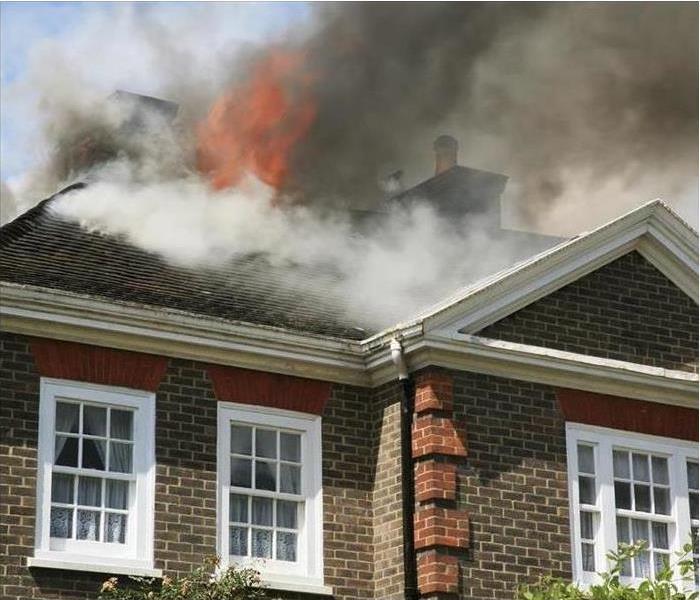 Fire damage in Sandy, UT.
Fire damage in Sandy, UT.
Whether you are waiting on the insurance company or the contractor, it can take a while for repairs to be completed on a fire-damaged home. Protective steps, such as board up service, can prevent additional damage from occurring to your home while you wait.
Emergency Board Up Service
If your home has extensive fire damage, you may be tempted to think it couldn't possibly get any worse. However bad the damage may seem, there are several reasons you should protect your property:
- Theft or Vandalism
Vacant homes are attractive targets for thieves and vandals because the risk of being caught is lower. Burned homes may contain valuable property that thieves may steal if your home is not properly protected.
- Insurance Requirements
Most insurance policies require homeowners to take reasonable steps to prevent additional damage from occurring to their homes. Failing to take these steps may result in additional damage not being covered by your insurance. Fortunately, most insurance covers the cost of these protective measures.
- Liability
If you don't secure your damaged home and someone goes inside and gets hurt, you may be liable for that person's injuries. However, you should not enter an unsafe building yourself. You may need to contact a professional restoration service in Sandy, UT, to safely secure your property.
- Weather and Animals
Holes in the roof and walls of your home provide entry points for wind, water and animals. Covering up these openings prevents additional damage from occurring because of a storm or animal infestation.
What Is Board Up Service?
The heat from a fire can cause windows to break. Additionally, windows are often targets for vandals or thieves. Windows can be secured by covering the openings with plywood and securing them with bolts attached to the interior walls. Plywood may also be used to cover sections of the exterior walls or roof that have holes.
What Is Tarping?
Tarps may be used to cover damaged portions of your roof to prevent rain from entering your home. Because working on a fire-damaged roof can be dangerous, it is a good idea to contact a professional to provide this service.
What Other Steps Should I Take?
The water used to put out fires can cause additional damage if steps are not taken to dry out your home as soon as possible. Do not attempt to enter your home until the fire department says it is safe. Once you can go inside, start removing wet items. Consider contacting a restoration service to assist with drying out your home.
Do not attempt to move back into your home until all of the fire and smoke damage has been cleaned up. If you have insurance, your insurance policy may pay for you to temporarily live somewhere else, such as a hotel room or a rental, while your home is being cleaned and repaired.
Protective steps, such as board up service, can prevent additional damage to your home. Your insurance professional or local fire department can assist you if you are unsure which steps to take to secure your property.
What To Do When Your Toilet Leaks With Every Flush
8/18/2023 (Permalink)
 Toilet leak can lead to several water damage in Sandy, UT.
Toilet leak can lead to several water damage in Sandy, UT.
Toilets are pretty hardy units. Those porcelain commodes remain sturdy and durable, usually lasting for decades after installation. However, like anything in the home, it can break down. When homeowners in Sandy, UT, observe a leaking toilet, they should take action.
A leak is a time to assess and react quickly. Small leaks can lead to significant problems such as water damage and mold. Therefore, owners shouldn't wait and see or put it off for another day. The following are tips for handling this situation.
- Understand the Common Causes of a Leaking Toilet
What is essentially wrong? Focus on this question as you begin your leak hunt. Water could escape from the toilet for many reasons; thus, learn the intricacies of the device and its various parts. For instance, any of the following situations could explain the mishap:
- Someone improperly installed it.
- The bowl or tank has a crack.
- The bolts are loose.
- The wax ring broke or dissolved.
- The base is weakly sealed.
- The wax ring is busted or old.
- Create a Plan To Locate the Main Issue
Find the bathroom leak by running some tests. Start with observation. When you flush, do you visually see when the drips or leaks happen? Where is the release? How much is coming out? For instance, you may observe water around the base with a weak wax ring or a bad flange. Check out those parts before moving to something else.
If that isn't the answer, tighten the bolts to see if the base needs more security. A wobbly seat may lead you to this option. Furthermore, drips may happen from the lines or minor breaks in the porcelain. Drop color-safe dissolvable tablets into the tank. Flush and keep your eyes open for color outside of the unit.
- Assess for Additional Water Damage
If water drips into the floor, walls or ceiling, the material soaks it up. This situation proves problematic for several reasons. When the fluid sits for long periods, it could harm the structure's integrity, beginning to weaken and rot. In addition, mold spores thrive on dampness. They exist everywhere and migrate through the air and the movement. If present, they reproduce in moist, organic substances. Thus, owners could find fungus growth with long-term leaks.
Call a professional water remediation team to assess the bathroom and surrounding area. These porous items permit dampness to go deep inside, reaching microscopic levels that dehumidifiers and bleach cannot reach. These experts evaluate the conditions and can create a plan to clean and restore the room. They may not fix the toilet, but they can attend to the secondary damage.
- Determine a Strategy to Resolve the Problem
Be sure to fix the origin of the water source. Once you know how it occurred, work with plumbers to correct the trouble. Buy new parts and ensure that specialists install them to avoid future issues.
When you push the handle down, water shouldn't come out. If you observe puddles or drips, then examine the unit for concerns. Determine the cause of your leaking toilet and repair the source of trouble.
3 Flood Safety Issues You Should Know About
8/4/2023 (Permalink)
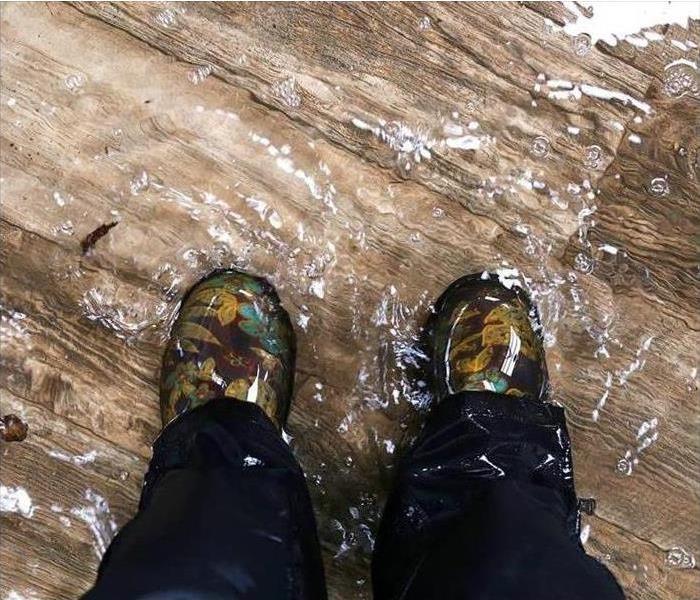 Flooding can cause severe water damage.
Flooding can cause severe water damage.
One of the primary concerns for property owners during and after a flood is water damage to property. However, there are also safety issues that you should be aware of. These are three of the most common.
- Contaminated Water
Floodwaters are often contaminated with sewage, human or animal waste, chemicals, pesticides, microorganisms and other potentially harmful substances. Water that is possibly highly contaminated, such as floodwater from rivers and streams, is called black water. This type of water requires protective gear and specific training to be removed safely.
If your building requires water remediation due to flooding, contact a professional water remediation company in Sandy, UT.
- Flooded Roads
Attempting to drive through standing water can cause water damage to vehicles and create a safety hazard. While large commercial vehicles may be less likely to be washed away than passenger vehicles, there is still a risk that the driver could lose control of the vehicle or the vehicle could stall out resulting in the driver becoming stranded.
Additionally, it is difficult to know what may be under the water on a flooded road. The road could be washed away or contain hazardous objects.
- Electrocution Risk
Storms that cause flooding often also lead to downed power lines. Live wires that come in contact with standing water can create a risk of electrocution. Avoid walking through standing water if at all possible. If you or your employees must enter a flooded area, wear protective rubber boots and gloves and shut off the power to the building before entering. If you can not safely get to the main shut-off, contact the power company and ask them to shut the power off for you.
Water damage to property is not the only risk property owners face after a flood. Be aware of these three common safety hazards and how to avoid them.
5 Frequently Asked Questions About Mold
8/4/2023 (Permalink)
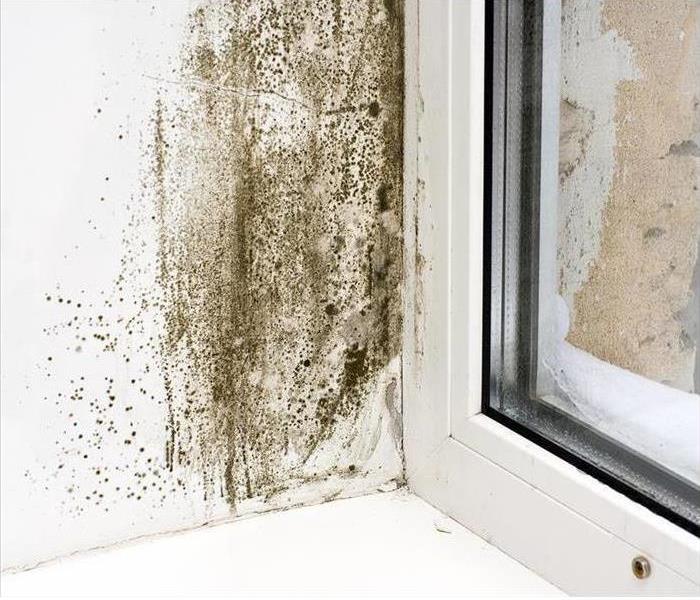 Mold damage found in a local home.
Mold damage found in a local home.
Most people have encountered mold growth at some point. However, many have questions about this common unwanted fungus. These frequently asked questions will help you better understand mold and what you can do about it.
Frequently Asked Questions About Mold
- What Is Mold?
Mold is a variety of fungus. Mold reproduces through spores that travel easily through the air and land on indoor and outdoor surfaces. Because mold needs moisture to grow, it is more prevalent in areas with high humidity. This is why mold is often found in damp areas, such as shower rooms, refrigerators, laundry facilities and property with water damage from leaks or flooding. There are thousands of species of mold and some have beneficial properties; however, mold can also cause property damage because it feeds on the materials it grows on.
- How Can You Tell If You Have a Mold Problem?
Mold naturally occurs in the environment and is always present in most buildings. However, excessive mold growth can lead to problems. One of the first signs of mold is often musty odors. If you are noticing musty smells, it is a good idea to inspect areas that are prone to mold, such as bathrooms, basements, sink areas and windows. Mold often appears as black, brown, gray, green or pink stains that may have a fuzzy appearance.
- What Causes Mold To Grow?
Mold needs oxygen, food and water to grow. Mold grows best in temperatures between 77 and 86 degrees Fahrenheit and can not grow at temperatures below 40 degrees Fahrenheit. It also thrives in wet conditions, such as buildings that have water damage. It can consume almost any organic matter, which makes it difficult to fight mold by removing food sources since even very clean buildings usually have some organic matter on surfaces.
- Where Can Mold Grow?
Mold can grow on any material that provides it with a food source. Organic materials, such as paper, wood and dust provide optimal food sources for mold; however, it can also grow on some synthetic materials, such as adhesives, textiles and paint. Mold can not feed on inorganic materials, such as metal, concrete or glass, but it can digest the dust, dirt and other organic residues that may accumulate on these surfaces. Replacing materials made from wood and paper, such as drywall or wallpaper, with mold-resistant alternatives can reduce the chance of mold problems in your property.
- How Does Mold Damage Surfaces?
Mold eats the materials it grows on, which can cause the material to rot or decay. Mold that is not promptly removed can cause undesirable smells, stains and other cosmetic damage and structural damage. The longer mold is allowed to grow, the more it breaks down materials and spreads to new surfaces, so it is important to contact a mold remediation company in Sandy, UT, as soon as mold is discovered.
Even though mold is a natural part of the environment, excessive mold growth can cause serious property damage. Reducing sources of food and moisture and promptly removing mold when discovered is the key to limiting mold damage.
5 Times When You Should Call a Restoration Company
8/4/2023 (Permalink)
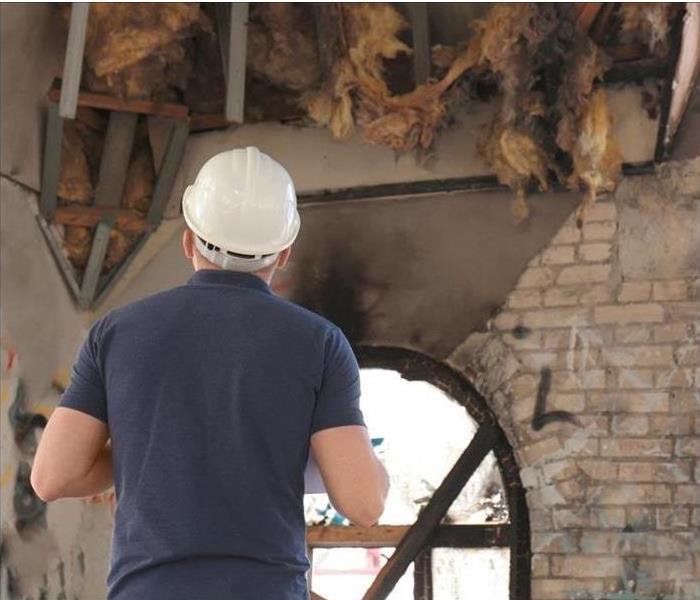 Severe water damage to a local property.
Severe water damage to a local property.
If you have water damage in your building, you may be wondering whether you can handle the cleanup and restoration yourself or if you need to call a restoration company. These are five situations where you should contact a restoration company to handle pipe burst cleanup or other services you need.
When to Contact a Restoration Company
- You Have a Sewage Problem
Raw sewage contains contaminants that aren't safe to handle without professional safety equipment and training. If you have a sewage backup or an overflow from a toilet that contains urine or feces in your building, contact a sewer cleanup company in Sandy, UT, for assistance. Avoid entering the area until cleanup is complete. Doing so risks spreading bacteria around your building.
- You Have a Major Plumbing Problem
A broken pipe can dump a lot of water into your facility if you don't take quick action to shut off the water source. You will need to get your pipes repaired or replaced before you can turn the water back on. Contact a plumber to fix the problem quickly and correctly. Once you have stopped new water from leaking into your building, consider contacting a water restoration company to clean up the damage. Mold can begin to grow in as little as 24 to 48 hours if you don't completely dry out your property. Hiring a professional may reduce your risk of additional property damage.
- There Is a Large Amount of Water Damage
Small leaks can often be handled with a mop and bucket or a wet/dry vacuum. However, if you have a large amount of water damage, trying to handle pipe burst cleanup by yourself may not be realistic. A water restoration service can clean and dry your property fast, reducing the chance of mold or mildew growth and structural damage caused by excess moisture.
- You Have Water Damage From a Major Storm or Flood
Water damage from storms and flooding also requires professional cleanup, because the water may be contaminated. Additionally, storms often cause downed power lines and other damage that can increase the risk of electrocution when entering standing water. Restoration professionals have the equipment and training to deal with these types of risks safely. Additionally, they have the resources to clean up large amounts of water damage faster than you are likely to be able to accomplish on your own.
- Your Building Was Damaged by Fire
The water used to put out large fires may cause more structural damage than the fire itself. Restoration companies can work to restore all of the different types of damage, including fire, smoke and water, that your building may have after a fire. Additionally, technicians will sort through the contents of your building to determine which of your property may be salvaged and which needs to be discarded.
Attempting to save money by doing cleanup yourself may cost you more in additional property damage in the long run. If you need pipe burst cleanup or have another large or complicated water damage situation, contacting a professional restoration service may save you time and money.
Immediate Steps To Take After a Pipe Burst
7/31/2022 (Permalink)
 Flooding can cause severe damage.
Flooding can cause severe damage.
A frozen or broken pipe can wreak havoc on your building in Sandy, UT. Having a list of water damage tips can help you spring into action when it happens.
Cleaning Tips for a Commercial Building With Water Damage
You will probably notice the signs of a broken pipe pretty quickly. The problem can get out of control quickly, and it may be a few hours before someone is able to get to your building and do something about it. Here are some things you can do while you wait to minimize damage.
Shut Off Water
The first thing you want to do is cut off the water at the source. After all, a broken pipe can't leak if there is no water flowing to it. Shut off the water main in the building, and let everyone present know that it will be off until the problem is resolved.
Turn Off Electricity
Electricity and water don't mix. The longer the broken pipe has been leaking, the more caution needs to be taken to separate the two. Your safety protocol should include a step for turning off the power. By shutting off all breakers that release power to the affected area, you are protecting everyone in its vicinity.
Call the Professionals
A flood in your building is not something you should try to handle on your own. There are three main calls you need to make right after a pipe bursts:
- Plumber to fix the pipe
- Water damage mitigation experts to clean up the building
- Insurance provider to start the claims process
In addition to getting professional help with the problem at hand, calling the experts can also verify that you are on the right track with the progress you are making. They can give you the specific damage tips and extra steps you need to take so that you are ready for them when they arrive.
Remove Standing Water
The longer water stands in your building, the more damage it continues to create. If you can safely do so, it's a good idea to pump any excess water out. Your personal protection must come first, though. If you don't know how deep the water is or if part of the structure is damaged, it's better to wait for the mitigation team to get there.
Document the Damage
Your insurance company is going to want to know the full extent of the problem in order to review your claim. Take pictures and videos of the affected area so that you can include them in your report. Make a list of everything that may need to be replaced and how much it would cost to do so. You can always make revisions if the cleanup technicians are able to salvage some items, but this initial list gives you a solid starting place.
It's easy to feel helpless after a broken pipe floods your building, but don't despair. You may not be able to tackle the whole cleanup process by yourself, but following these damage tips can ensure that you are being proactive and protecting your building as well as you can until reinforcements arrive.
After Fire Damage, Securing the Building Is Essential
7/26/2022 (Permalink)
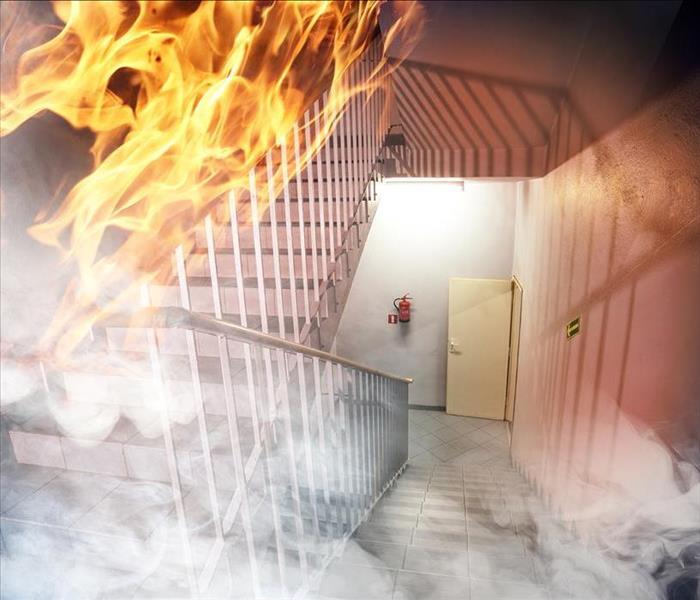 Fire damage.
Fire damage.
After a fire happens in your Sandy UT, business, getting back on track doesn’t happen overnight. As you wait for the adjuster to arrive and approve the fire damage and restoration company to start the work, the damage to your business may leave it in a compromised position. To avoid additional damage, it is essential to secure the property via tarping or boarding up holes and other potential entry points.
Preventing Secondary Damage Prior To Fire Cleanup
Along with the damage from the fire that may have created unwanted openings to your building, there are likely broken windows from the emergency responders putting out the flames. Leaving those exposed areas as is may become a costly endeavor.
Benefits of Board Up Services
Board-up services are a relatively simple way to keep your business secure. In most cases, the restoration company you have selected will provide these services. Ensuring that the property is properly secured while awaiting restoration offers many benefits.
- Maximize Insurance Coverage: Most insurance carriers will require roof covering and board-up services. While your business insurance will likely cover the damage from the fire, as well as the water damage sustained while putting it out, secondary damage likely won’t be covered. If the openings are not covered and heavy rain happens, it means more damage to the property. That additional damage will likely not be covered. Neglecting the property may also affect how much your insurance provider is willing to cover.
- Prevent Looting: A property with clear entry points is a prime target for thieves and vandals. That leaves any area of the property that wasn’t affected by the fire open for unwanted guests. From expensive electronics to fixtures and pipes, there are many items in a business that may be worth stealing. Securing the property minimizes the chances of someone gaining entry into the property.
- Keep Animals Out: Wild animals love to find new places to make a home. Even a small, broken window may provide enough space for something to get in. Once the property is riddled with pests, it means extra cleanup and potentially damaged furniture, walls and other items.
How Board Up Services Work
A restoration company typically offers these temporary services as part of the restoration plan. During the initial property inspection to determine restoration needs, a certified specialist will also determine areas that require temporary covering. This may include tarping over a hole in the roof or installing plywood over broken windows or other holes. For boarding up, a professional will use high-quality plywood that has been recommended for such purposes by FEMA. This wood is designed for exterior use and is a minimum of 5/8 inches thick. The affected area will be carefully measured, and then plywood pieces will be attached with screws to ensure it stays put until proper cleanup can begin.
When your business sustains fire damage, it isn't always a simple cleanup. Considering that it takes time to properly restore the property, it is essential to ensure that any openings are properly covered to ensure additional damage doesn't happen.
The Importance of a Professional Category 3 Flooding Response
7/20/2022 (Permalink)
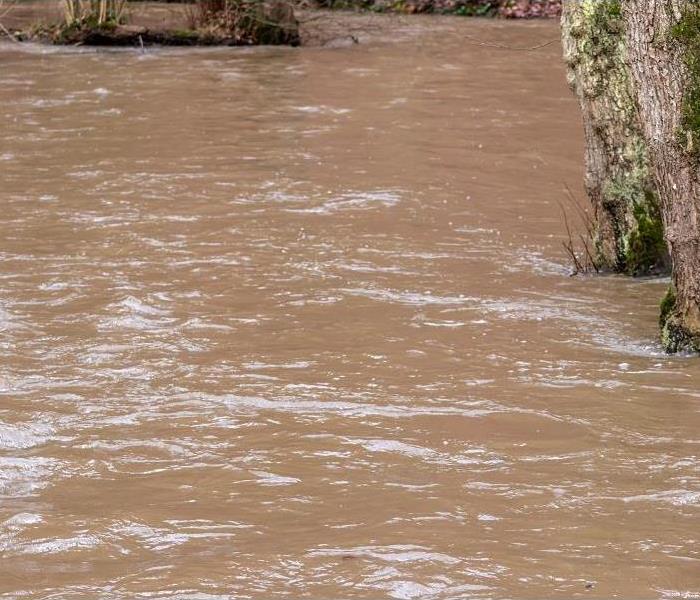 Know the different categories of flooding waters.
Know the different categories of flooding waters.
The damage to your home after flooding from natural sources is much more troublesome than the damage that occurs after a broken pipe or overflowing dishwasher. When your Sandy, UT, home is subjected to rising water from heavy rainfall or a river that has grown past its banks, you’re dealing with contamination from multiple sources.
Distinguish Between Category 1 and Category 3 Flooding
Water is one of the number one causes of damage to homes and accounts for some of the most frequent insurance claims. However, not all water damage is the same. There are three categories to label the risks associated with encroaching water:
- Category 1 or Clean Water comes from sanitary sources, such as the water supply line in your kitchen or from rainwater. You may not want to drink this water, but there’s very little risk to you when you’re exposed to it.
- Category 2 or Gray Water comes from less sanitary sources, such as an overflowing toilet bowl or a broken aquarium. This water is contaminated and poses some risk. Cleaning and restoration professionals generally treat this type of damage with anti-microbial sprays and other disinfectants.
- Category 3 or Black Water is highly contaminated. This water may come from rivers, seas, or sewage lines. Windblown rainwater may also fall in this category. This water carries and picks up multiple contaminants from many sources of pollution, including feces, toxic chemicals, and pathogens.
Category 1 Flood Cleanup
When your home is flooded from a break in a pipe or melting snow, the cleanup steps are straightforward:
- Shut off the water and power.
- Remove everything within the exposed area.
- Extract water and thoroughly dry the affected rooms.
- Disinfect the area.
- Complete repairs and restoration.
Professionals and homeowners may work together to address Category 1 flood damage because there is limited risk associated. It is worth pointing out that Category 1 water contamination could worsen if not addressed promptly. As water sits, it absorbs chemicals and contaminants from carpeting, furniture, and other materials throughout the home until eventually qualifying as Category 2 or 3.
Category 3 Flood Cleanup
When flood water is full of hazardous pollutants, it poses significant risks. This necessitates the use of personal protective equipment by trained water damage cleanup professionals. This gear may include tall boots, a protective jumpsuit, gloves, and face masks. Storm damage restoration requires all the steps of Category 1 cleanup and also calls for professional removal of contaminated materials. Professionals provide a specialized response depending on the source of water, i.e., sewer lines, seawater, and river water. You should not try to clean up this wastewater on your own. Any contaminants absorbed by the structural components and furnishings of your home could lead to secondary damage and lingering effects such as stains and unpleasant smells.
Your insurance provider may recommend professionals to address Category 3 flooding, and you should never attempt this on your own. It is possible that you could clean up Category 1 damage or assist cleanup technicians but contact your insurance provider first. It is often the case that professional cleanup is faster, more complete, and less likely to cause further harm.
Does Your Toilet Overflow When You Run the Shower? Clean the Mess With These Sewage Cleaning Tips
6/17/2022 (Permalink)
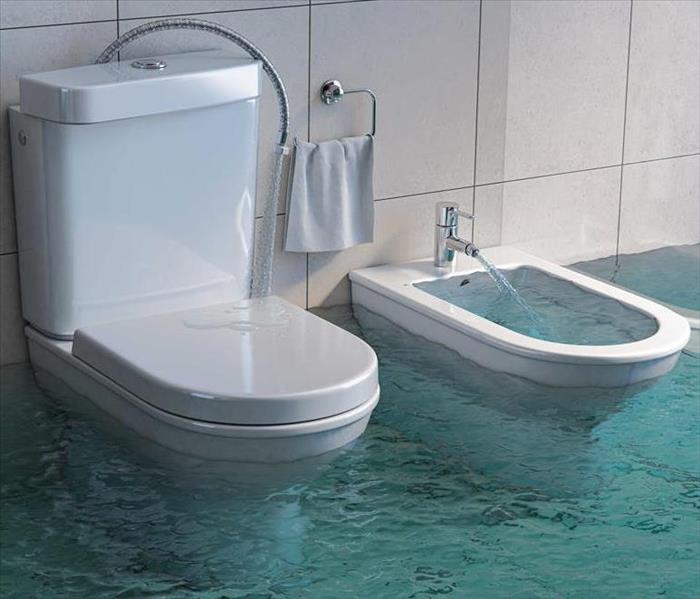 Have a better Water Cleaning Experience following Our Tips.
Have a better Water Cleaning Experience following Our Tips.
When sewage lines become clogged, the obstruction prevents the fluid from moving through the pipes. It builds up, escaping from the nearest outlet. Sinks and toilets offer the most viable openings, so when you step into the shower and the plumbing is blocked, the water is likely to pour out of the toilet, leaving owners to handle sewage cleaning.
How To Manage Toilet Overflows and Sewage Cleaning
As a homeowner in Sandy, UT,, you need to protect your house and seek professional help for clean-up procedures. With a few tools and expert assistance, your shower and toilet can function correctly again. The following are three essential tips to follow.
1. Locate the Clog Causing the Toilet Overflow
Turn off the water to the immediate area. You don't want another overflow to occur while hunting down the source. Then, move from one location to another to find the blockage. The following are possible zones of trouble. Check each one to ensure that you catch any concerns.
- Drain Cleanout
- Outside sewage pipes
- Commode
Plungers work well for smaller obstacles. However, this clog is likely larger and further down the plumbing. For more efficiency, control and force, use a snake. Begin with the toilet. The snake is a long flexible tube that can enter the lines. It has a crank that creates pressure to push the clog through. You can move through the various home openings, testing for concerns.
If you can't find the issue, move to the drain cleanout. It's usually located outside. Wear gloves and use the torque to remove the lid. You're entering the main sewer line, filled with microorganisms and waste. If you're reached this point, it's best to call in a water restoration company in Sandy, UT, to assess the trouble.
2. Tackle Outside Troubles
After a while, older pipes corrode, weakening your structure. Also, tree roots can grow into lines, leaving cracks and holes. These permit sand and dirt to collect, blocking movement. The specialists have high-quality video scopes to scrutinize the plumbing. They can clean the drain out and identify external concerns. In addition, they begin necessary repairs.
3. Start Sanitizing and Sewage Cleaning Procedures
Sewer water is a class 3 fluid, also called black water. It's not something you want to stick around in your home because it hosts bacteria and mold. The longer it lingers, the more contamination you face. Spores such as mold, for instance, migrate into your porous materials like drywall and flooring. Mixed with the water, they reproduce quickly, infesting places within one to two days. Therefore, immediately work with the remediation team to initiate clean-up procedures once you've located the blockage.
Have the team assess the clogged pipe aftermath, collect samples and take moisture readings. Attack the fluid. Dry out the impacted spaces using industrial dehumidifiers and air scrubbers. Discard porous, overly saturated materials.
Deodorize and treat the bathroom with antimicrobial cleaners. Then, rebuild and replace the space, returning it to proper working order.
Running your shower can trigger the toilet to overflow if you have a clog. Shut off the water and find the source. A team of water experts can assist in your trouble and begin critical sewage cleaning. Don't wait. It's imperative to improve fluid movement and sanitize the space.
How Frozen Pipes Put Your Home at Risk
6/13/2022 (Permalink)
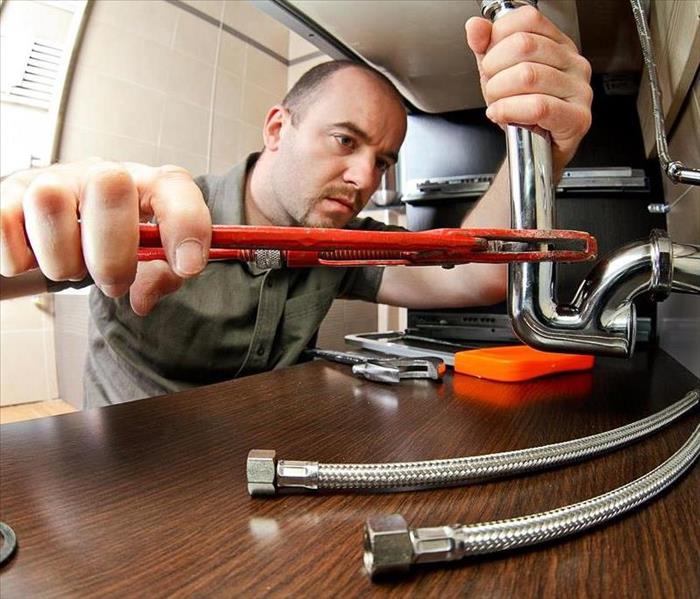 Learn more about Frozen Pipes by following these Tips.
Learn more about Frozen Pipes by following these Tips.
Throughout much of the country and in all parts of Canada, temperatures have the potential to fall below zero. In certain conditions, that could result in pipes that rupture and spray large quantities of water into your home in Sandy, UT.
When this happens, your home is at risk for multiple forms of water damage. Electronics could be destroyed, flooring could suffer warping, insulation could be rendered useless and furniture could need to be replaced. If you are faced with this problem, calling a local SERVPRO franchise will likely be your best option.
Solid Methods To Avoid Frozen Pipes
The best solution is to avoid letting your pipes freeze in the first place. When this happens, the expansion of the water in the pipes to ice can result in broken plumbing components. A few precautions can nearly eliminate this from happening:
- Make sure the temperature in the home never falls too low
- Wrap pipes that have an outdoor exposure in an insulated covering
- Have someone monitor your home if you are away for a week or more
- Pay attention to unusual cold snaps in your region
At times, through no fault of your own, you could experience a pipe freeze. This could happen due to a power outage, similar to what happened in Texas in 2021. At this stage, you might need to turn your attention to a professional water cleanup.
The Best Process for Dealing With a Pipe Burst
Once you discover significant water has leaked somewhere in your home, you will need to call for professional help. A nearby SERVPRO franchise works 24/7 and is always available with trained technicians to help out. The #1 choice in cleanup and restoration is Faster to Any Size Disaster and they will likely dispatch a crew to your home within two hours. Professionals understand that a fast response to frozen pipes can reduce damage and expenses.
After an initial inspection and damage assessment, the team will work quickly to improve the situation. The following steps are critically important:
- Stopping the flow of water
- Ensuring safety for everyone
- Establishing an effective plan of action
- Limiting damage through timely water removal
Workers will see what materials in the home can be restored and what will need to be replaced. They will have an orderly process for identifying salvageable items and then they will use the most effective restoration techniques.
The Important Methods for Completing the Cleanup
After the initial stage, the team will go to work on sanitizing, cleaning and deodorizing your home. This process makes use of specially formulated cleaning agents and addresses impacts to flooring, furniture and personal belongings. It makes sure no odors linger and reduces the chance of mold forming on surfaces. Drying technicians also make sure the home returns to a comfortable humidity level.
Frozen pipes can damage your home in many ways. If a pipe breaks, a fast response is required by a professional organization to reduce damages and manage a successful cleanup and restoration. A SERVPRO franchise will use the best methods to restore your home to its original condition.
Can Solar Panels Weather Storm Forces?
5/30/2022 (Permalink)
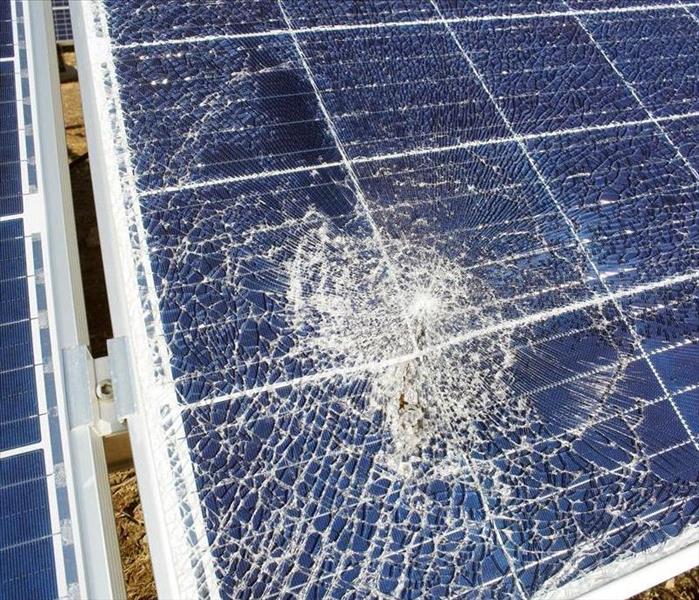 Follow our Tips and Learn More about Solar Panels in your Property.
Follow our Tips and Learn More about Solar Panels in your Property.
Your home is likely to do well in a storm; however, a few factors could impact water defense and solar function. Is it strong enough to fight off hail and water trouble? Hailstones alone can range from miniature to the size of large fruit, packing quite a punch when it impacts structure.
Therefore, homeowners in Sandy, UT, may worry about panel damage and the costs of repairing the home and solar materials. Are your panels durable enough to handle intense forces? Understand the factors that influence damage.
Important Questions to Consider
What Could Cause a Problem?
Several elements pose a threat to solar panels. Hail, debris and water are the three primary culprits of trouble. During a hail storm, the moisture freezes, creating balls of ice. These irregular formations fall to the Earth and pack a serious punch. How hard it hits depends on air resistance and gravitational force. In fact, according to Wikipedia, hail can fall anywhere between 20 and 110 mph. This natural phenomenon is nothing to joke about.
Homeowners should also remain vigilant about the placement of trees. Broken branches or falling objects such as acorns and pinecones could scratch the panel surfaces. These scratches interfere with energy production, but their harm is not always easily discernible.
Finally, solar companies seal panels during installation. This permeable barrier keeps water out and secures the roof from saturation. However, if the wear deteriorates from wear and tear or excessive snow and water, fluid could breach the panels, seeping into the ceiling. This event leaves the property vulnerable to rot, mildew and mold.
How Does Design Influence Panel Damage?
Solar companies understand that their product has severe impact and conditions, so they use durable materials and test their panels to ensure they work against the elements. The industry wants to satisfy customers and avoid constant replacements and repairs. Therefore, they strive to invent and improve their concepts to combat external threats.
Hail, for instance, comes at random. It's unpredictable. However, when a storm comes through, it rages. Panels undergo thorough testing to survive a storm with minimal harm. Many operations select materials that can withstand intense forces. Panels can survive hail in most cases. They are hardy enough to take the beating. However, owners may find cracks if hailstones continuously hit one spot, increasing pressure.
What Should You Do When You Find an Issue?
Be aware of possible roof damage. Have regular inspections with your solar panel specialists and licensed roofers, determining whether your panels and rooftop are in good condition. Furthermore, immediately contact a water damage remediation in Sandy, UT, to assess any possible water infiltration.
It's critical to perform an immediate assessment, determining the extent of dampness and possible mold growth. The trained crew has specialized equipment to help dry out the facility, tear out contaminated pieces and restore the premises to good condition. Catch problems early. Otherwise, the situation exacerbates, creating more headaches and work for you and your restoration crew.
Solar companies work hard to deliver quality products that survive harsh storms. However, sometimes even the best materials get harmed. Panel damage can happen. Remain proactive about inspecting your roofing and work with professionals to correct any trouble immediately.
What Landlords Should Know About Fire Damage Responsibilities
5/18/2022 (Permalink)
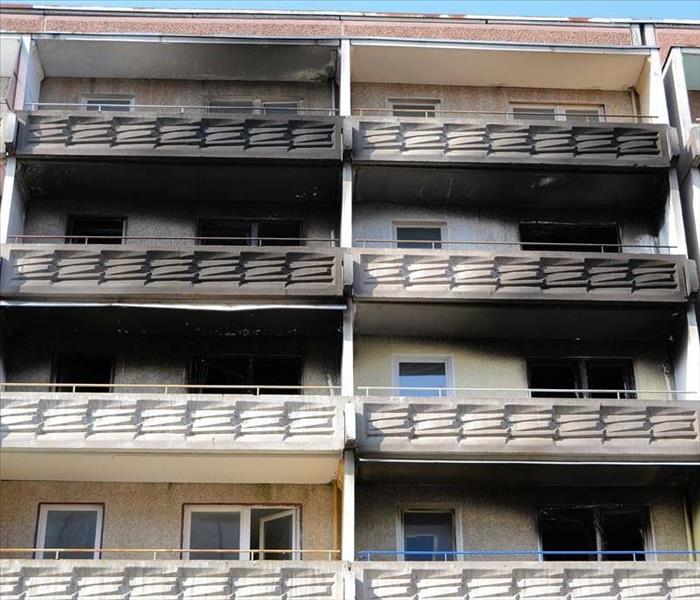 Know more about Fire Damage Responsibilities.
Know more about Fire Damage Responsibilities.
As the owner of a rental property, you’re responsible for providing a place that is safe, clean, and well-maintained for current and future occupants. Part of your duties is making sure that you have insurance to cover losses associated with covered perils, such as theft, natural disasters, vandalism, and fire.
Although you never want to experience a fire at your property in Sandy, UT, having insurance is strongly recommended, and may even be required if you have a mortgage. Do you know what your obligations are for repairs and restoration in an apartment fire? Here’s what you should know.
Understanding Fire Damage Obligations
As a landlord, you’re generally responsible for providing a livable or habitable place. This includes maintenance and repair of your property’s structure and inner workings, such as roofs, foundations, plumbing, wiring, HVAC systems, etc. Typically, your property insurance would cover damages, and costs to repair and restore the rental property.
Your policy would not cover any occupant’s personal items as those are covered by renters’ insurance. Generally, this is how responsibility for damage coverage lands in most situations.
Exploring Responsibility for the Fire
Things become more complicated if one party is at fault for the fire. Let’s suppose that the first started due to a tenant overloading a circuit or leaving a candle unattended. You’d still be obligated to notify your insurance company and contact a fire restoration services provider to start the cleanup process, making your property habitable.
That said, your insurer would reach out to your tenant’s renters insurance company for compensation up to a certain liability limit. This is why you should have clear language in your lease agreement about your tenant’s obligations after an apartment fire.
If the fire was due to faulty wiring or negligence on your part, you may be obligated to also cover damages to an occupant’s possessions. Their renters’ insurance company may work with your insurer to pay for damages. You may also be sued by a tenant for these losses. Another thing to consider is that a tenant may want to break the lease or withhold rent if the home is unlivable while it’s under repair. This is why it’s incumbent upon you to familiarize yourself with local laws when it comes to your obligations related to fire damage.
Getting Back to Normal
Because you’re obligated to provide a livable space, it’s critical that you hire a professional restoration company for cleanup and repair. These pros work to restore the rental unit back to pre-fire conditions. This includes a comprehensive range of services:
- Removal of items affected by fire, smoke, soot, and water damage
- Advanced cleaning techniques
- Special drying and dehumidification approaches
- Disinfection of contaminated items
- Building repair and reconstruction
- Repair of affected items, where possible
Your cleanup professionals will come up with a plan that minimizes the time it takes to restore your property to a livable condition.
An apartment fire can be devastating to landlords and tenants alike, but the obligations are not the same. Generally, you’re responsible for restoring the property structure and its internal systems, while an occupant’s renters policy covers their possessions.
You may be liable for additional damages for a fire that resulted from poor maintenance or negligence on your part, so it’s important to stay on top of property upkeep.
Insurance Agents Choose SERVPRO for Storm Restoration Services
5/18/2022 (Permalink)
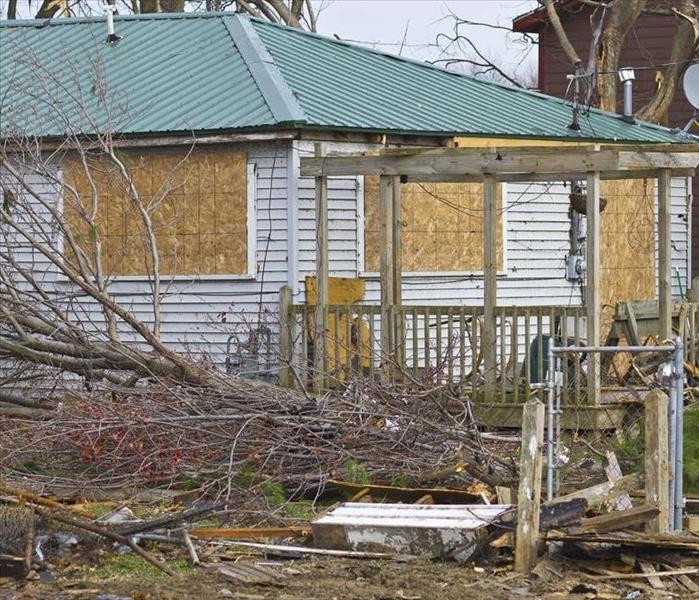 Choose the Best Professionals for Storm Restoration.
Choose the Best Professionals for Storm Restoration.
When a hurricane or other significant weather event hits your business in Sandy, UT, you will probably be wondering what steps to take next and how to deal with the devastation. You will need to make sure that all of your employees are safe while keeping financial loss to a minimum. There may also be the pressure to keep the doors open for business as much as possible until full operations can resume. Having some understanding of these types of situations is especially crucial in a crisis, like immediately after a severe storm.
There are several important reasons to always have a dependable storm restoration company available when you need them.
What Are the Benefits of Hiring SERVPRO's Technicians Post-Storm?
1. The Company Is a Trusted Leader in the Disaster Restoration Industry
This business has become the go-to restoration company for residences and commercial facilities, handling all varieties and sizes of disaster recovery assignments throughout its many years in operation. This company's employees have worked hard to build their reputation, and they consistently work to keep their prestige as trusted leaders in the restoration industry.
2. All Employees Are Highly Trained and Qualified
All of the technicians are thoroughly trained and qualified in fire and water cleanup to the Institute of Inspection Cleaning and Restoration Certification criteria. They also routinely complete continuing education courses to learn new skills in storm response and the latest industry developments and practices.
3. Technicians Can Handle Disaster Restoration Jobs of All Sizes
Whatever size the disaster, SERVPRO has the technicians, expertise and industrial equipment to tackle any job. Their Disaster Recovery Team is an elite group of specialists experienced in large-scale storm restoration. They commonly work on storm, fire and flood damage in enormous capacities like hospitals, universities and municipalities. With more than 1,900 locations throughout the U.S. and Canada, they can mobilize as many technicians and resources as needed.
4. Experts Are Always Available For Quick Storm Response 24/7, 365
Disasters don't only occur during business hours, so a team of restoration specialists must be available any day at a moment's notice. SERVPRO's qualified professionals are always available to take on your problem. They will arrive prepared with everything needed for an emergency disaster response.
5. Specialists Can Help Their Clients Navigate the Insurance Claims Process
The insurance claims process can be overwhelming at times, especially when you are a business owner dealing with the stress of a major disaster. The restoration professionals are very familiar with the often complicated details of insurance claims. They are experienced in helping their clients complete the process quickly and efficiently, making it a much simpler task for the storm victims.
SERVPRO's experts are skilled in handling all of your storm restoration needs and more, including fire, wind, mold and flood damage. Before the next major storm arrives, make sure you have a disaster preparation plan in place and know who to call for your emergency recovery needs.
After all, the sooner help arrives, the sooner your business can resume its normal operations. You can keep the peace of mind you need to carry you through the procedure of returning your commercial property to its pre-storm condition.
The Benefits of 24-Hour Response
4/25/2022 (Permalink)
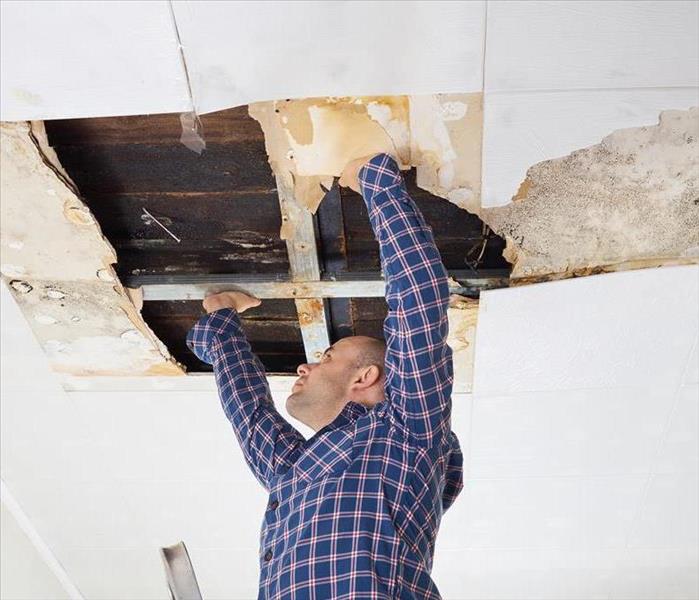 24-Hour Response is the Best Option for your Sandy, UT Property.
24-Hour Response is the Best Option for your Sandy, UT Property.
Disasters don't just happen during regular business hours. Because fire or water damage can happen at any time, it makes good sense to work with a preferred vendor with 24-hour availability.
SERVPRO can take a call, send a response team and provide a detailed report of the damage and what needs to be done about it within hours, regardless of when the company receives notice of the problem.
24-Hour Response
When an accident damages a building, every moment counts. Many problems can occur when mitigation is delayed:
- Weakened structure
- Hidden water damage
- Mold growth
- Additional spread of the problem
The SERVPRO call center is open 24 hours a day. This guarantees a fast response on any call that comes in. For example, if your client receives notice from the overnight security guard that a frozen pipe has busted in his or her building, there's no need to wait until morning to get the cleanup process started. The local team is notified that its services are needed immediately.
On-Site Arrival
Timely arrival is the key to fixing an issue before it gets too out of hand. Once the certified mitigation specialists in Sandy, UT, know there's a problem, they can assemble a team and be at the building within four hours. They go to work immediately, surveying the area and preparing the task list for the whole restoration process.
Upon arrival, technicians gather information about the safety precautions that have been taken up to that point. Has the water main been shut off? Has the circuit breaker been flipped to avoid electric shock? If anything else needs to be done, they make sure it happens before the work begins.
Another benefit of 24-hour service is that your client doesn't have to worry about his or her building being left vulnerable to the elements or other intrusions. During the first visit, the team can board up holes in the roof, siding, windows and doorways to deny entry to thieves, vandals and animals.
Efficient Assessment
A thorough assessment is necessary for many reasons. It helps the mitigation team prepare what it needs for the cleanup process. It also lets your clients file accurate claims, which makes the process easier for them and for the insurance adjusters who are assigned to their cases. You know from the beginning of the cleanup process what the entire restoration process will look like and approximately how long the mitigation team expects it to take to complete.
Because SERVPRO is always open, the technicians who respond to the call can have a detailed estimate ready to go over with your client within eight hours of arriving on site. Before work begins, the team lead conducts a verbal briefing with the building owner. Your client has the opportunity to ask questions so that he or she understands what to expect from the mitigation process.
For 24-hour response and superior damage control, you can rely on SERVPRO to meet your clients' needs. The local team is Faster to Any Size Disaster, starting cleanup within eight hours of being notified there's a problem.
Can I Restore My Fire-Damaged Possessions?
4/14/2022 (Permalink)
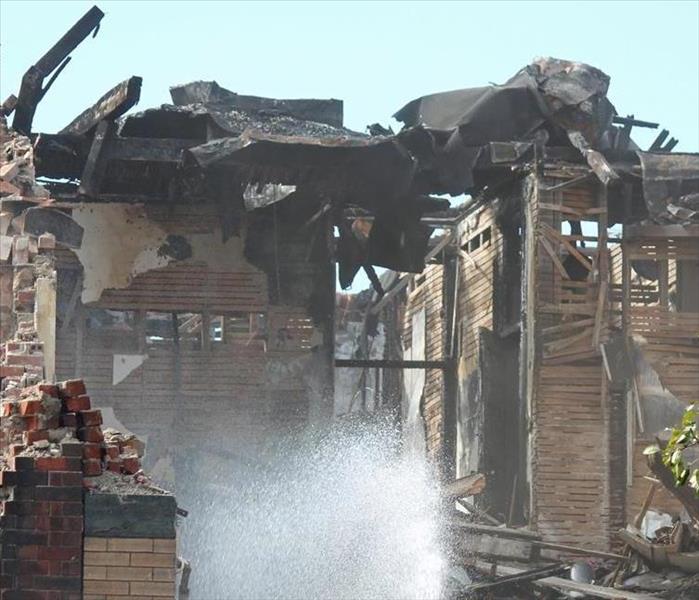 Learn more about restoring burned items by following our tips.
Learn more about restoring burned items by following our tips.
You may feel that all is lost after sustaining a fire at your commercial building in Sandy, UT. Experiencing such a detrimental disaster can leave you with little to no hope. In fact, you will probably be questioning the future of your business.
Fortunately, all is not lost; fire damage restoration professionals can often rescue, clean and restore contents you never imagined could've survived the harsh effects of the flames, soot and smoke. This is because these specialists have the industrial equipment, high-tech cleaning strategies, such as dry-cleaning, in addition to years of expertise to accomplish the job successfully.
How Are Fire-Damaged Contents Cleaned?
Many of your affected belongings can probably be restored, possibly even to their pre-fire condition. Content cleaning specialists have the expertise and equipment to salvage various types of items that have been damaged by fire, smoke, and soot. Here are the typical steps:
1. Inventorying and Packing Them
After the flames have been extinguished, restoration specialists will begin by performing the pack out process. This procedure starts with the technicians working with you to sort all of your salvageable contents from the unsalvageable. Then, the professionals inventory each item as they carefully load them into boxes to be transported for cleaning and storage.
Virtually any building contents can be included in a pack out. During a pack out, you will often see items including but not limited to:
- Rugs
- Linens
- Curtains
- Home decor
- Books
- Photographs
- Children's toys
- Clothing
- Shoes
Even certain electronics can be sent for special cleaning. They are particularly susceptible to smoke and soot.
2. Transferring Them to a Facility for Cleaning
Once the pack out is complete, the contents are transferred to a cleaning facility. This facility has technicians with the expertise to know the best methods for restoring your possessions. They use state-of-the-art equipment designed especially for cleaning and restoring various kinds of articles.
3. Cleaning and Restoring Them Using Various Techniques
The specialists know the best methods to bring your belongings back to life. They do everything possible to return the property to its pre-fire condition. These restoration strategies include:
- Dry-cleaning (for clothing and other textiles)
- Vacuum-freeze drying (a type of document drying)
- Deodorization (including the use of activated charcoal and Archival MicroChamber paper for documents and other paper materials)
- Ultrasonic cleaning (for non-porous items)
- Sanitization (including gamma irradiation for paper-based materials)
4. Storing Them in a Climate-Controlled Area
After your belongings are cleaned, they are safely placed and stored in a temperature- and humidity-controlled location. They will remain safe in content storage until you are ready to move them back into your commercial building.
5. Returning Them to You
When your commercial property is finally restored, your clean contents will be returned to you as safely as they were packed up and moved initially. Only now, they will be in much better condition since a thorough content cleaning has been conducted.
Every day, technology is making it increasingly possible to salvage damaged contents. Hopefully, you will never have to experience the devastation of a fire. However, if you do, knowing that restoration methods like dry-cleaning and deodorization exist can offer some peace of mind.
Water Damage and Building Materials
3/29/2022 (Permalink)
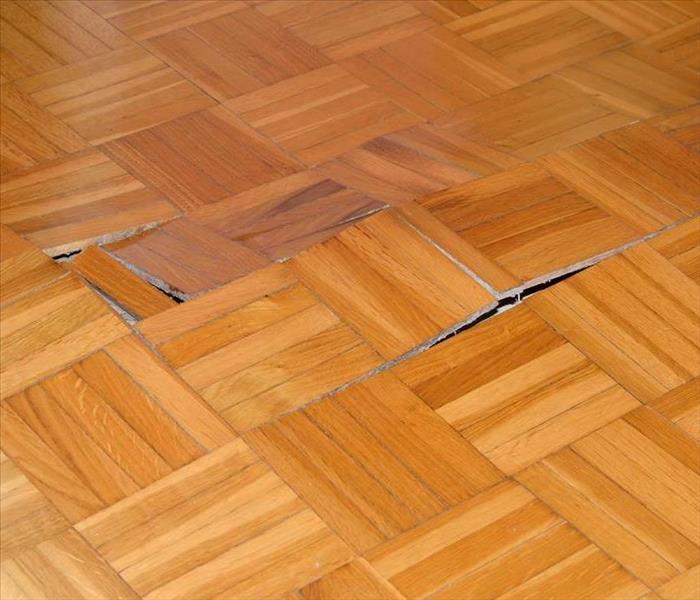 Know more about Water Damage and Building Materials By Following Our Tips.
Know more about Water Damage and Building Materials By Following Our Tips.
Depending on the extent of water damage to your home, you might wonder about what materials are salvageable. The general rule, especially when dealing with category three damage, is to discard as much as possible, primarily any porous materials that came into contact with the contaminated water supply. However, even in situations of clean water damage, materials, like swelling wood, might not be salvageable.
According to most water restoration services in Sandy, UT, water affects building materials differently, the following are three potential examples.
1. Insulation and Swollen Wood
Swelling wood is likely beyond saving, especially if it is a laminate material. The swelling means the water has sat long enough on the surface to soak beneath any seal coat. When wood swells it expands and distorts, making it hard to salvage, especially when not solid wood.
Insulation is typically discarded after a water pipe repair because it is a favorite nesting site for mold. Mold establishes itself within 24 to 48 hours of a leak. Standard insulation is porous and cheap enough to replace without concern. If insulation is foam-based, mitigation specialists might try to save it — if they can dry the surrounding areas.
2. Drywall and Solid Wood
If the exposure time is limited and drywall and solid wood elements have not been contaminated, it is possible to salvage furniture and wallboard. However, salvaging these materials depends on the contamination level or the water.
3. Flooring and Ceiling Tiles
If a supply line in the ceiling or beneath the flooring of your home, it is quite possible the materials will be removed. Ceiling tiles are typically porous and will expand when wet, similar to flooring. The subfloor can twist and swell also causing problems with the home's structure.
Water can lead to swelling wood, but it can also lead to mold growth and numerous other problems. It is crucial to know what materials are salvageable after water damage. While the above list is helpful, it is not exhaustive.
4 Ways To Avoid Water Damage During a Vacation
3/24/2022 (Permalink)
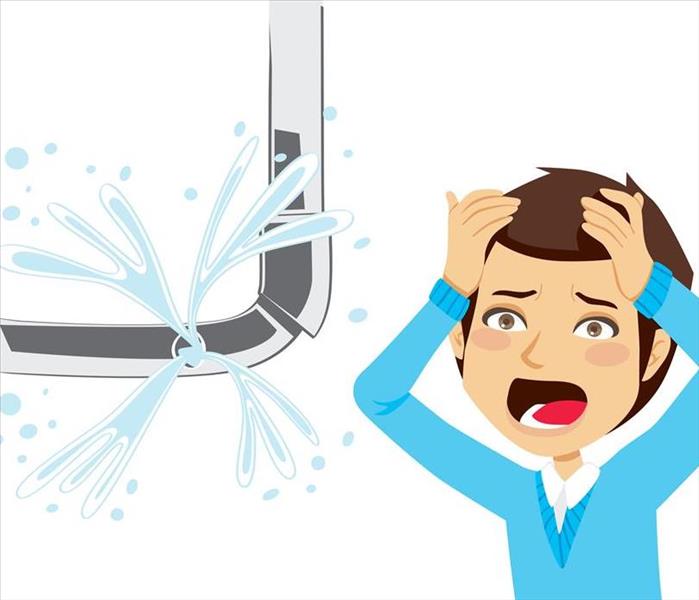 When you return from Vacation, give your Home a good check-up by following these tips.
When you return from Vacation, give your Home a good check-up by following these tips.
After returning home from vacation, the sight of flood rooms or landscaping is never a welcome sight. Unfortunately, there are many potential causes of flooding, such as a damaged appliance, frozen pipes, or a leak in the roof. Heavy storms in the winter or summer could cause flooding in the basement or a faucet that was left on could lead to water damage.
If you want to avoid the expensive damage caused by water, you need to think beyond water pipe repair.
Avoid Water Damage by Checking Your Home
1. Thoroughly Check Pipes, Appliances, and Your Home
Begin your inspections several weeks before your vacation. You may need to flush the water heater, replace an appliance, or schedule water pipe repair, and this could take some time to complete. Watch out for hoses that appear damaged, seals that are worn, signs of rust, cracks, and clogged gutters and downspouts.
2. Turn Off Water to Your Home
Shutting off the water at the main is one of the best ways to avoid water damage from a broken pipe when you're on vacation. If you don't want to turn off all the water, shut it off behind toilets and appliances, as well as underneath sinks. Once you've turned off the water, open the faucets to drain any remaining water from the pipes.
3. Turn Off the Water Heater
The water heater in your home contains a lot of water. Some newer heaters have a vacation mode that provides some protection. However, if you plan to be gone for a long time, it's best to completely turn the water heater off, so you can avoid a flooded basement when you return.
4. Ask a Neighbor To Check In
There are several benefits to having a friend check your home while you're gone, such as picking up newspapers, mail, and packages. They can care for pets and make sure your home looks as if you were still at home.
Returning home to leaking pipes or having to face water pipe repair as well as flood damage may be one of the worst ways to end a vacation. Sandy, UT, water damage repair and reconstruction professionals may have other valuable tips.
What Is an Ice Dam and Can I Prevent It
2/23/2022 (Permalink)
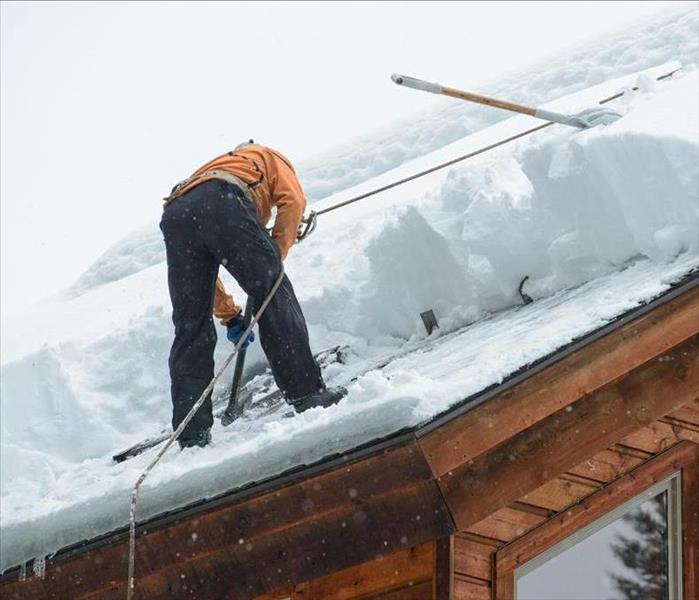 Prevent Ice Dam and be Ready for Winter Storms in your Sandy, UT property by following These Tips.
Prevent Ice Dam and be Ready for Winter Storms in your Sandy, UT property by following These Tips.
Winter in Sandy, UT, is not for the faint of heart. Many days, you probably begin by dealing with the snow that piled up overnight. This work takes time and zaps your energy as you snow blow and shovel it off the driveway, not to mention having to scrape it off your car. While it probably won't risk making you late for work as the snow on the ground, an ice dam can be a significant problem during a winter storm.
Ice dams are formed when ice accumulates on a home's eves, creating a ridge. This ridge traps the water from melting snow, preventing it from quickly draining from the roof. Then, the water can refreeze. The freezing backup can cause roof issues and indoor water intrusion problems that often lead to water damage to attics, insulation, ceilings, and walls.
Additionally, water leaks can lead to secondary damage such as mold. The mold infestation can turn out to be an even bigger problem than the original ice and water.
How Can I Prevent Ice Dams at My Home?
By controlling the amount of heat that escapes through the home's roof, you can reduce your risk of ice dams. There are several ways to do this.
1. Control the Home's Upward Airflow
Prevent air from leaking through the ceiling into the attic. Most homes have small gaps in the walls and ceiling from which air can escape. You can do this by creating an air-tight seal around all leakage paths. This action will prevent warm, humid air from rising to the attic.
2. Increase the Home's Insulation
Ice dams can be significantly reduced by adding insulation in your home's ceiling and roof areas. This insulation will help keep the warm air inside the house, preventing it from warming the roof. You can hire water damage mitigation specialists to perform an inspection to make sure you are leak-free and ready for the next winter storm.
3. Repair Roof Issues
A damaged roof or even missing shingles can provide more opportunity for heat to transfer from the indoors to the outside of the roof. Have your roof inspected regularly and repair any issues immediately.
4. Add Vents to the Roof and Soffits
Sometimes adding vents to the roof and soffits can be a great help if you still have some uncontrolled airflow. They will operate by pushing the warm air out of the roof while pulling the cold air inside. If you are still experiencing roof issues when it snows, you can often get a step ahead of the game by utilizing a snow rake. A snow rake is a tool made for pulling the snow down from a roof. Raking your roof at least once during a winter storm can prevent snow from piling up. Just be careful when performing this job, as you can get injured by the influx of falling snow and ice.
With these tips, you can prevent an ice dam. By implementing these suggestions now, you can avoid some potentially costly damage. Begin today planning for your next heavy snow. In the meantime, check with your insurance agent to verify that your homeowner's insurance includes ice dam coverage.
How Do You Make a Fire Restoration Claim?
2/23/2022 (Permalink)
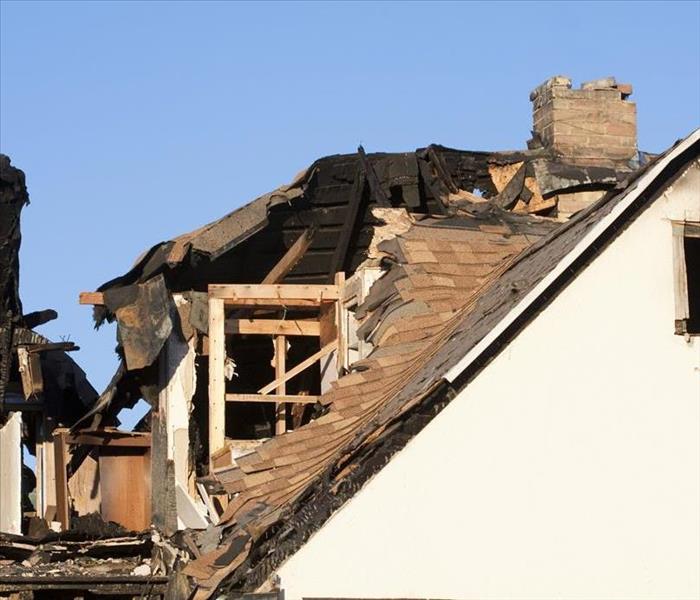 Follow These Tips to Make a Fire Restoration Claim properly. If you have questions, just call us.
Follow These Tips to Make a Fire Restoration Claim properly. If you have questions, just call us.
When you experience a fire, the only thing on your mind after survival is fire restoration. The thought of being able to walk back in your front door and have your home back is encouraging, and it is a thought that can seem so far from reality, which is why you hire a remediation specialist in Sandy, UT, to help you realize the vision. The specialist will go through a series of steps, including:
- Water removal
- Debris removal
- Smoke cleaning
- Repair and restoration
However, before a restoration can begin working on your home, a company needs some form of payment. The best way to pay for a restoration is by filing an insurance claim and taking advantage of your coverage.
Fire Restoration and Insurance Claims
Filing a fire insurance claim can seem overwhelming. It is a lengthy, somewhat lengthy process and so much depends on a claim's approval. Thankfully, a restoration company can help you with the claims process. Many companies even act as a sort of intermediary between the client and the insurer. However, it is still beneficial to understand the necessary steps you must take to help the claims process along.
1. Call Your Insurer
Before you consider fire or smoke cleaning, it is necessary to call your insurance provider. Making that one phone call is the initiation of the claims process. Reporting the disaster is also when you schedule an insurance assessment. Unfortunately, insurance adjusters are often backlogged, so the adjuster can take a few days or more to arrive on location. Thankfully, you do not have to wait to call a restoration service. As soon as you report the disaster, you can call a service to come and assess the damage.
2. Mitigate Further Loss
Most insurance companies will require homeowners to take action against further loss, meaning you will need to mitigate potential damage. A restoration company can help you because most offer mitigation services. Fires can lead to extensive structural damage, such as holes in the roof or walls. Restoration companies will typically offer board-up, tarping, and fencing services to help protect your property and your claim.
3. Take a Loss Inventory
When the property is safe to walk through, you can help move the claims process along by preparing for your meeting with the adjuster. A loss inventory is a collection of photographs and receipts to help the adjuster assess your losses. Usually, you will take pictures of damaged items and collect receipts into a lass statement.
4. Wait for Insurance Adjuster
The last thing you need to do is wait for the insurance adjuster. Most adjusters will try to prioritize disaster claims so that an adjuster will show up within a few days in many instances. However, the timeline does depend on the adjuster and their schedule. A fire restoration often depends on the claims process. Unfortunately, the claims process takes time, and it can feel overwhelming.
Thankfully, restoration companies can often help streamline the process by communicating with the insurance company on behalf of the client, making the process easier to comprehend and manage.
How to Snake a Clogged Drain the Easy Way
2/19/2022 (Permalink)
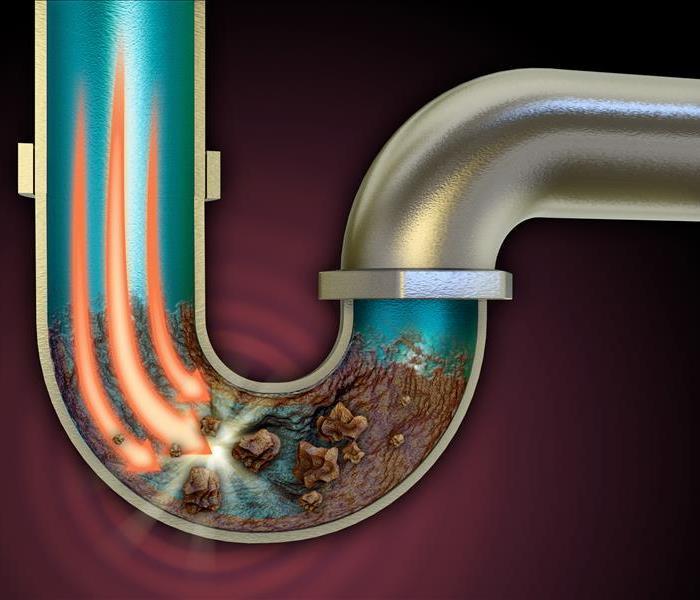 Contact a professional to avoid further damage from a clogged drain.
Contact a professional to avoid further damage from a clogged drain.
A clogged pipe can be a real hassle, especially when it affects the drain in a bathroom or kitchen sink. However, aside from the annoyance of slow draining water, a clog can lead to much larger issues, like a pipe break. There is no reason you have to struggle with a minor clog. Using an auger or drain snake, you can loosen and break apart the clog, allowing the water to flow freely, and protecting your pipes against future wear.
Despite the ease of using an auger, some clogs will be too far into the pipe, requiring a professional plumber in Sandy, UT. Professionals are typically required in instances of:
- Pipe collapse
- Root growth
- Sewer line problems
What Is a Blocked Drain?
A clogged drain is defined as an obstruction that slows down the flow of water and reduces the water pressure that goes into the drain pipes. While clogs are often caused by natural factors (e.g., food, leaves, and debris blocking the pipes), they can also be caused by neglect, poor maintenance, or failure to follow the general best practices in house maintenance.
In most cases, the clog is located near the affected drain. When the blockage is close to the drain, a simple tool, such as an auger, is the best way to eliminate the blockage and free up a stopped drain.
Do not use drain cleaners or other harsh chemicals to free a blockage. Using chemicals can damage the pipes. Additionally, using multiple chemicals can cause adverse reactions, like eruptions in the pipe.
How To Snake a Blocked Drain
Manual augers or snakes are affordable tools for clearing away blockages. The tool consists of a coiled wire with a twisted head.
You will insert the head of the snake into the drain, slowly pushing it deeper and deeper. When you reach the first bend, twist the handle in a circular motion to rotate the wire. Move the auger back and forth until it navigates the bend. Then continue pushing the auger into the pipe. When you reach the clog, turn the handle again, pushing back and forth until you feel the wire clear the clog.
When Do You Need To Call a Plumber?
Most manual augers only reach a depth of 25 feet. If you do not feel a clog after fully extending the auger, you might need to contact a plumber because the blockage is likely further in the system.
Additionally, you will want to contact a plumber if you have broken up the clog and your drain is still blocked. If your pipe is still blocked, it likely indicates a problem further in the line.
Professional plumbers have the tools necessary to assess and reach deep clogs. While you can purchase these tools, the expense does not often justify the DIY approach.
A clogged pipe is a nuisance. Using a manual auger or snake is usually enough to resolve most home drainage issues. However, there are instances when blockages deeper in the system or other problems are causing the current issues. Contact a professional for assistance when you are dealing with an unknown issue and have tried the simple solution.
How To Handle a Fire Sprinkler Mishap
2/19/2022 (Permalink)
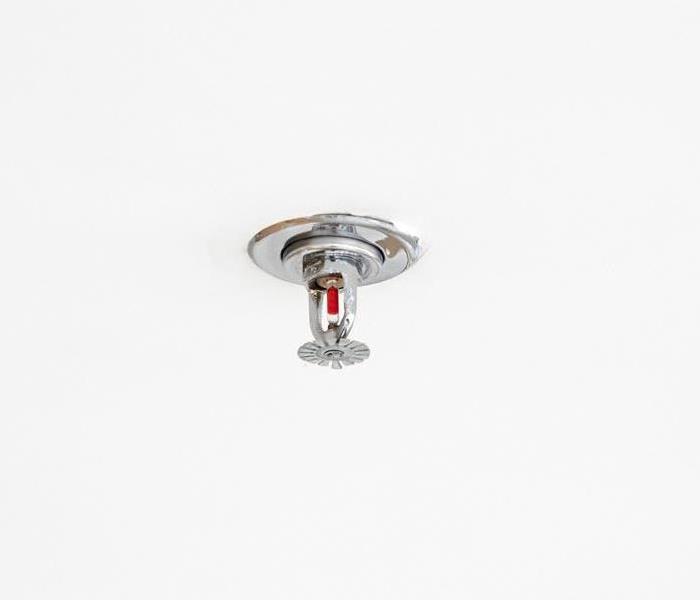 Follow these tips if you experience problems with your Fire Sprinklers in your Sandy, UT property.
Follow these tips if you experience problems with your Fire Sprinklers in your Sandy, UT property.
A fire sprinkler system is a vital part of your fire safety protection plan. If the sprinklers leak or malfunction, though, they can cause flooding and water damage to your commercial building in Sandy, UT. If this happens, there are a few steps you need to take immediately to handle the problem.
Turn off Water Supply To Halt Flooding
The first thing you do is turn off the source of the water. This will stop the flow from gushing through the pipes and out of the fire sprinklers. Your system may be connected to the water main, but it is likely that the water supply to the sprinklers comes from an alternative source:
- Suction tank
- Pressure tank
- Penstock or another natural reservoir
- Recycled water
It's important to understand how your system works and how the water gets to the sprinklers so that you know how to turn it off when necessary. The sooner you can stop the flow of water, the less damage it's likely to cause in the long run.
Call Water Restoration Company
Once the crisis has been stalled, contact your local certified water damage specialists. They can arrive within hours of notification to assess the damage to your building and formulate a plan for restoring it to its former state. By the end of the first visit, you should have a clear idea of how long the cleanup is likely to take and approximately how much it will cost.
Notify Your Insurance Provider
Since flooding from the sprinklers probably meets the criterion of a sudden, accidental event, chances are that your property insurance will cover the cost of repairs to your building. Make a call to start the claims process. An adjuster will survey the damage to substantiate your claim, and your agent can explain how much of the associated costs your policies will cover. Even if your provider doesn't cover the expense of repairing any damage to the sprinkler itself, it may pay the mitigation bill.
Prepare for the Mitigation Process
The technicians in charge of the repairs will likely walk you through the specifics of what needs to be done before they get started. At a minimum, you can expect that they will need to dry out the area and disinfect it. Damaged items such as furniture or electronics Any ruined materials will need to be discarded and replaced. Finally, the affected space will need to be restored so that it looks like it did before.
Prevent Future Accidents
Most fire system malfunctions can be avoided with routine maintenance. As with other pipes, you also need to guard against frozen sprinkler lines so that they don't leak. Tampering can also cause a fire sprinkler to go off and douse the area around it. Under normal circumstances and with proper care, however, accident occurrences should be sparse if not nonexistent.
A sprinkler system is a good way to protect your building from total annihilation during a fire but it can cause flooding if something goes wrong. Knowing how to handle sprinkler accidents can lower your risk of extensive damage.
Understanding Insurance Coverage When Your Basement Floods
2/17/2022 (Permalink)
 It is helpful to understand your homeowner's policy.
It is helpful to understand your homeowner's policy.
A basement flood can happen for a variety of reasons. An active storm season, a busted or frozen pipe, leaking appliances and invasive groundwater can all affect the lowest level of your home in Sandy, UT. When this happens, one of your first calls is likely to be your insurance provider, and it helps to know exactly what your homeowner's policy covers.
2 Things You Should Know About Insurance Coverage
1. Insurance Limits
Even if you have great property coverage, some things will still be out-of-pocket expenses. There are several types of damage that aren't typically covered by the standard homeowner's policy:
- Neglect - Rotting floorboards or drywall damage that happens due to an ongoing issue that you have failed to address in a timely manner is unlikely to be covered by your insurance. This is one of the reasons it's important to call water damage mitigation experts as soon as you notice a problem.
- Plumbing - While your insurance coverage on your home pays for repairs to the structure itself, it doesn't usually cover repair or replacement of the leaky plumbing components that cause the damage.
- Appliances - Likewise, your insurance policy doesn't pay to repair or replace broken appliances, which can also cause a flooded basement.
- Storm Flooding - The typical homeowner's insurance plan doesn't pay for damage repair after a storm. It is wise to get a separate flood policy to protect your home, particularly if you live in a flood plain or have a basement.
- Sewer Backup - A clog or break in the sewer line that leads to your home may result in a backup through a shower, bathtub, toilet or sink. Your property coverage may not pay for the subsequent damage, so a separate water backup policy is a good idea, particularly if you live in an older home or in an established neighborhood with a lot of trees.
2. Standard Coverage
If your basement flood is the result of a sudden, accidental incident, your homeowner's policy likely covers the mitigation of the water damage it leaves behind. This includes removal of damaged materials, water extraction, drying, disinfecting and restoration. Depending on how extensive your policy is, it may also pay for the recovery of some of your personal items, such as electronics or important documents.
While many policies share the same basic components, the only way to be sure of the terms of your specific coverage is to review the documents that outline its boundaries. Talk to your insurance agent if you need clarification. It is also a good idea to ask what risks you are taking that aren't covered by anything in your plan.
No matter how many preventative measures you take, a basement flood can still happen in your home. Knowing all the things that could cause it helps you decide what kind of coverage you need beyond the basic homeowner's package. Most of the structural damage may be covered by your plan, but you may have to pay for other repairs out of pocket. A thorough understanding of your homeowner's policy is helpful in deciding how much you need to save for a rainy day.
The Benefits of Installing Storm Shutters
2/13/2022 (Permalink)
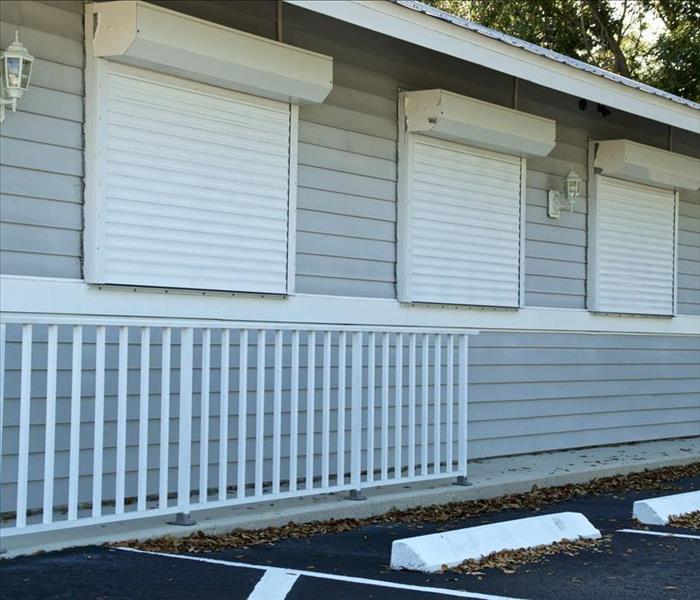 Storm shutters can improve safety in your home.
Storm shutters can improve safety in your home.
Do you live in an area prone to high winds or intense storms, like hurricanes and tornadoes? If so, you might want to invest in permanent storm shutters. Sure, you can use plywood or other temporary coverings, but they take time to deploy, and sometimes, time is not on your side.
Installing permanent shutters is an excellent way to ensure rapid deployment when the weather takes a turn for the worse. Many storm remediation services in Sandy, UT, will explain that there are at least four benefits to installing such tools.
4 Benefits to Installing Storm Shutters
1. Improved Safety
The primary reason to install shutters is for safety. With the tools permanently attached to your house, they are easy to move into position when a storm is rolling in, even if you are given little warning.
Window coverings like these, typically made of metal or other solid materials, help to eliminate the danger to people inside the house. The windows are less likely to shatter because of high winds or flying debris, meaning people inside are less likely to be injured during a storm.
2. Improved Curb Appeal
If you have ever driven through an area preparing for a possible hurricane, you will notice that most homes have plywood covering vulnerable areas like windows. Plywood is not the most attractive surface in the world, and it can really take away from your property’s curb appeal.
Using permanent shutters looks more natural on the house, more intentional. The covers come in a variety of materials and colors, ensuring you can find the perfect combination to highlight the beauty of your home rather than take away from it.
It is worth noting that most people do not care about curb appeal when they are trying to protect their homes. However, in many instances, professional-grade covers are more durable than plywood and require less damage to the property to install.
3. Utility Savings
Having coverings installed is also a way to save on utilities, especially heating and cooling. In the warmer months, on especially hot days, you can use the covers to keep the harsh sun and UV rays out of your home, helping to keep your place cool.
4. Increased Resale Value
Finally, if you live in an area prone to violent storms, like hurricanes, installing permanent shutters can improve your home’s resale value. Permanent devices are attractive with a practical purpose. Granted, the resale value might only increase if you are in an area with a high demand for such products.
High winds can lead to significant damage to a house, everything from broken windows to damaged roofs. Storm shutters are only a single means of defense, but they do offer many benefits to the interested homeowner. From safety to resale value, there are few disadvantages to purchasing and installing such products. However, it is crucial to have the items installed correctly to make the most of your purchase. Choosing a DIY approach with little experience might result in sloppy installation and the ultimate failure of the covering, entirely mitigating the usefulness and benefits of the devices.
Reasons To Assess Electronics After a Fire
2/11/2022 (Permalink)
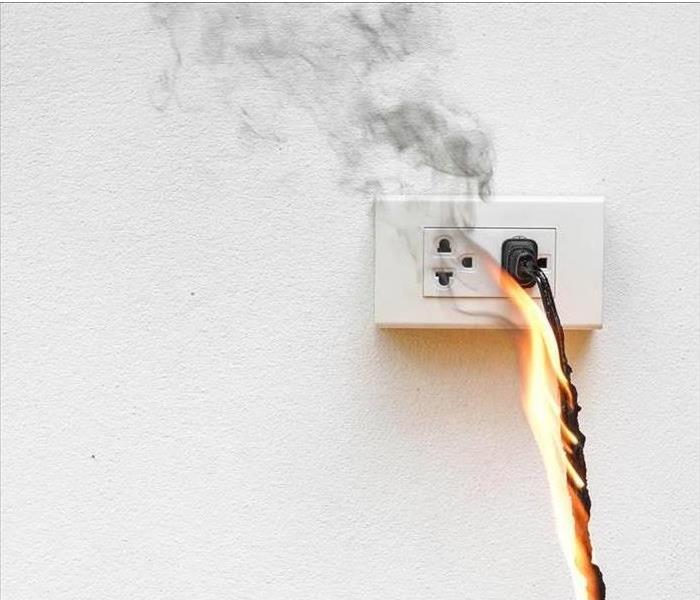 A fire can cause damage to your electronics. Assessing the electronics is an important step of the fire cleanup process.
A fire can cause damage to your electronics. Assessing the electronics is an important step of the fire cleanup process.
There are many ways that a fire can damage your home in Sandy, UT. Fire cleanup must happen in a timely manner, and it often involves both water damage and smoke damage mitigation. Some items, such as electronics, may not look like they are damaged, but the only way to tell for sure is to have them inspected by certified professionals. This assessment helps to identify the type of damage, whether it can be fixed and the steps needed to do so.
3 Reasons to Assess Your Electronics After a Fire
1. Type of Damage
You can't always tell if your electronics have smoke damage just by looking at them. Even if your computer, television and gaming system will turn on after a fire, that doesn't mean they're safe to use. Many things could be causing damage under the surface:
- Smoke particles
- Soot deposits
- Melted components
- Water damage
If smoke got inside the machine, it can leave a film behind that insulates the interior parts, causing them to overheat when it is used. Soot is highly acidic and thus can cause sensitive circuits to deteriorate. Without the aid of smoke restoration experts who can not only identify but also fix the problems, it is not a good idea to plug in your electronics or use them once they've been exposed to smoke.
2. Cleanup Process
It's important to get professional assistance when it comes to fire cleanup. Before technicians arrive, however, there may be some things you can do to stop or slow the damage that is happening. Wipe the outside surfaces down with a clean cloth to remove as much of the soot as possible. Remove the hard drive and the battery if it is safe to do so. This minimizes the risk of data loss or additional acid leaks.
The technicians start by inspecting the components of your equipment. They look for irreparable damage and assess whether the parts that cannot be cleaned can be replaced. Information retrieval often happens during this process unless the hard drive is so fried that everything is lost. As an added safety measure, the battery is likely to be replaced.
3. Loss Prevention
In the event of a fire, there is no guarantee that your electronics are not going to be damaged beyond repair. Any data saved on them may be lost, particularly if they are in the same room where the fire occurs. It's always a good practice to safeguard yourself from vast financial and information losses, even if the equipment used is lost.
Any expensive electronic item should always be insured through your homeowner's policy, the manufacturer's protection plan or both. It's also important to back up the information stored on your home computer, tablets and other devices on a regular basis. Invest in enough cloud storage for the whole family so that you don't lose any data even if the device gets ruined in the fire.
There are many steps to the fire cleanup process, and making sure that everything you bring back into your house when remediation is finished is ready to use again is a big part of it. This is especially important when it comes to your electronics. Wait until the technicians tell you they're safe to use before you turn them back on.




 24/7 Emergency Service
24/7 Emergency Service





























